Sun, 31 Jul 2005
Pause for breath
Pursuing an enquiry like this is necessarily a haphazard matter. The
demands of employment and households knock me off my enquirer
perch. By the time I have climbed back up events have moved on,
agendas have disappeared and priorities have changed (note the bird in
a cage metaphor, an example of how despite our best efforts, domination
can live on in us !)
Also, the exploration and development of satygraha—positive
programme—tend to be overwhelmed by new items of evidence, new insights
into the how and why of domination.
And I begin to see an awkward tension between the unfolding of the
enquiry process and reporting on it. Too much detail of the process
(such as this piece) obscures its usefulness and yet the validity of
the enquiry requires being explicit about its process. I'm looking into
how to keep the process more distinct from the 'findings' or
reports.
Another example of the tail wagging the dog is that by far the most
visited area of g.o.r.i.l.l.a. is the Picture Gallery. This
pleases me a lot since one of the reasons I write and publish here on
the web is that it contradicts one of the hidden aspects of
domination—the hegemony of text (and some would say, English text)
OK, I could have published on these topics in refereed journals, but
academic publishing, though incomparably more accessible and
cross-indexed than it used to be, remains a vehicle for text and
diagrams.
And as I
found with my experience of
The Mind Gymnasium, writing and
developing an extensively illustrated book requires a quantum leap of
resources compared with monochrome text. In consequence a hierarchy of
importance is supported that unconsciously sells us the notion that
anything and everything of consequence can necessarily be
expressed in text and that images are of much less consequence.
This flies in the face of daily reality where tv and
cheap colour printing, and more recently, the Internet,
digital still and cameras, dvds, colour printers, camera phones,
photocopying etc, have made the image ubiquitous. Owning the means
of production for
publishing writing and images has become as commonplace as owning a
phone. (The challenge
to conventional politics that this poses has yet to work its way
through our electoral processes.)
Dominance weather
Like mobile phones the image is multilingual. And much of the surge of
political conflict of recent years seems to me to have been image fed.
For example if you are one of countless Muslims who live near this
advertisement in central Brussels, how do you handle its challenge to
your cultural preferences?

It speaks but what does it say?
That corporate capitalism, on the way to exhausting its exploitation of
the material world, is now busy colonising intimacy, sexuality...

...and human feeling, turning them into things, products?
'Oh well we all know this' you say. But is this colonization just a
trivial aspect of modern life, unworthy of the kind of
attention I give it here? Or does it, as I believe, amount to a kind
'dominance weather' that clouds the skies of daily life, hiding our
psychotic
devotion to the comfort zones of consumerism, religion and wealth
creation, and disconnecting us from feeling the damage that dominance
causes?
So
that when, as
James
C. Scott has pointed out, tension between this, and other,
opposing
ideologies become very heightened, and the lightning strikes of
'terrorism' kill those near and dear to us, we see it as god-denying,
ie
'evil', and 'enemy'-driven, not the result of the core beliefs about
human nature that we hold to be true.
The response to such lightning strikes by one London tabloid seem to me
a good examples of this 'dominance weather'.
In the face of the 9/11 attack on new York, the Daily Express
brandishes its crusader logo and its christian credentials.

A month later, the worldview embodied in the Daily Express crusader
logo has been matched by the claim 'The world
at war'... (with Islam?)

In the week after the July 2005 bomb attacks on the London underground,
again under it crusader logo, the Daily Express claimed
(below) to know what the core values of its readers
demanded.

As I guess most of the world knows, the 'terrorist' the
headlines refer
to was a Brasilian electrician unconnected with the recent bombings
in the UK, who was killed by eight
bullets from armed
police while held face down on the floor of a London underground tube
train.
Newspapers
intentionally reflect and reiterate those attitudes that are proven to
sell
newspapers. This headline screams for the merciless vengeance of raw
dominance. Meanwhile the crusader (top) and the notion of 'evil'
(bottom) both
identify the page as brandishing a christian worldview. Do they
reflect, or create, or colonize, the worldview of the Express's 2
million readers?
If you haven't visited this enquiry's accumulation of other vernacular
evidence of how
deeply domination seems to be embedded in our daily lives,
take a deep
(preferably broadband) breath and visit the
Picture
Gallery now.
There are 0 writeback comments for this entry
posted at: 08:22 | permanent link to this entry
Sat, 30 Jul 2005
Giving children the education they deserve.
As the scale and depth to which domination and the love of power is
entrenched in our daily lives become visible
A question that arises real fast is how do we move from
the love of power to the power of love?
So far as we become aware of
this distortion of human potential in ourelves, we do what we can to
rectify it. And then comes another question, how do we help ensure that
our children or grandchildren don't be come affected (I was going to
say infected) by the cultures of dominance that we inhabit?
Conventional education, at least
in the UK too often seems to amount to 'schooling', regimes of
deference of one or
another kind in
which, in classes or 30 or more, the child is required to drink from
the fountain of a one
fits all state-defined curriculum. Many perhaps
most, seeing the 'jobs', 'career', 'qualifications', writing on the
wall shutdown creativity, imagination and self-direction, and get on
the hoop-jumping that is demanded. Not surprisingly, a substantial
vein of children decline this opportunity, embrace some form of
'Oppositional Defiant Disorder' and find better things to do with their
minds and energies, with corresponding benmefits and drawbacks
So if this is the prospect for
your child what do you do? One option a tough option is to found a
school that educates that how curioys that it needs to be said, is
child-centred rather than adults centered as state and private
education too often is.
In response to these kinds of
concerns, a colleague, Richard House, inspired the founding of a
Waldord Steiner School in Norwich, Norfolk, UK. I asked him to tell me
how he did it
Well, that’s a big question, with many
facets.
I have had 7 or so years
experience of the
Steiner schools movement now, since undertaking my first, Steiner Class
Teacher
training in the late 1990s. As well as being involved in the founding
of a
new Steiner school here in Norwich over the same time period, I am
a trustee of a major and long-established Steiner teacher training
course and a
regularly published writer on educational issues.
The decision to found a
school in Norwich was very much a collective decision taken by a
diverse group
of people (of which I was a part) who
both had major reservations about the nature of mainstream education
and
schooling systems, and also greatly admired the holistic educational
experience
that Steiner (Waldorf) education offers. I could say a great deal about
both of
these motivations, as I personally identify strongly with both of these
influences.
There is currently very little
if any
choice for parents and families who are dissatisfied with ‘mainstream
education’ (in which category I include both state schools and
independent schools which broadly follow the national
curriculum, and which mimic the testing and assessment regime of the
state
sector). Of course, families can opt for home education – and indeed
record
numbers are doing so; but for those parents who are either not inclined
to
home-educate, or for whom it would be quite impractical, Steiner
schools,
Montessori schools (which only commonly go up to about 8 years of age)
and
schools in the ‘human scale education’ (HSE) movement are just about
all that
is on offer in the UK.
Geographically, 7 years ago
there were just
two other Steiner schools in the whole of East Anglia – a small one in
rural
Norfolk and a larger one in Cambridge. I know a number of families who
have
actually changed careers and life-styles in order to relocate their
family so
that they live near a Steiner school – there must be literally hundreds
if not
thousands of families who have done this over the years. Norwich is a
very
independently minded part of the country, with lots of radical thinking
people
– the kind of medium-sized city that is a potentially ideal location
for a
Steiner school.
The original founding group
consisted of
three parents of young children who wanted a Steiner Kindergarten and
school
for their children, and an elderly anthroposophist who has been a
student of
Rudolf Steiner’s manifold cultural contributions for many years.
(‘Anthroposophy’ refers to the spiritual stream founded by Rudolf
Steiner after
the First World War, a movement which draws upon Steiner’s many
‘spiritual
scientific’ insights into humanity, life and the cosmos.)
As I understand it,
this is fairly typical of the way in which Steiner schools first begin:
although there is a lot of support available for new initiatives from
the
Steiner Waldorf Schools Fellowship, new schools necessarily emerge from
the
independent initiative of local groups who see a vision for a new
school in
their area and/or for their children, and set about bringing it about.
But
needless to say – founding a new school which is independent of the
state
system, and which has to be entirely self-financing through the efforts
of
people who are commonly not materialistic people with lots of spare
wealth at
their disposal, is far far more easily said than done! But I guess your
next
question will perhaps take us more into the actual process of founding
our school
– though of course (and as Steiner himself always emphasised), schools
are
always and necessarily unique.
But first, a bit about Rudolf
Steiner
himself and the educational system he spawned, as a kind of mystique
often
surrounds the man, which it is best to demystify at the outset. Not
least, it’s
a mystery to many just how one of humanity’s most original and
wide-ranging
thinkers and seers is so comparatively little recognised in the range
of fields
on which he has had, and continues to have, such a profound influence.
The
author of over 30 books and the deliverer of over 6,000 lectures in his
lifetime, his full collected works (in German) come to a staggering 350
volumes; and his lasting legacy includes uniquely innovative ‘impulses’
in
fields as wide-ranging as curative education and social therapy (the
world-renowned Camphill Communities); biodynamic agriculture (a
precursor of
organic agriculture); holistic (anthroposophical) medicine;
architecture and
design; the arts (Eurythmy, painting, speech and drama); organisational
consultancy; ethical banking and finance – and, of course, education.
Steiner held passionately to a
consistently
holistic, non-mechanistic approach to
human experience; and it is only now, when so-called ‘new paradigm’
cosmologies
are beginning to undermine the Zeitgeist
of a materialistic modernity, that Steiner’s remarkable insights are
beginning
to attract the widespread attention they richly deserve.
Some eighty years after the
first ‘Waldorf’
school was founded with Steiner’s blessing in Stuttgart (in 1919),
Steiner
Waldorf is now the world’s largest and most rapidly growing independent
schooling movement, with well over 800 schools and 1,500 Kindergartens
worldwide. So flexible and adaptable has the Waldorf educational
approach
proved to be in different cultural conditions that it is represented in
countries and continents the world over. Steiner’s educational
philosophy is developmentally informed, with the
teacher’s task being to provide the appropriate learning environment
consistent
with the needs of the unfolding child. This in turn requires, on the
teacher’s
part, a profound understanding of the subtleties of the developing
child; and
much of Steiner’s educational and other writings are taken up with a
detailed
articulation of such an understanding.
There is a lack of competitive
testing and
examinations in Waldorf education, with co-operation and ‘community’
being far
more valued than the individualistic competitiveness that inevitably
creates
winners and losers. The recently articulated
notions of ‘emotional intelligence’ (Dan Goleman) and ‘spiritual
intelligence’ (Dinah Zohar) were quite explicitly prefigured by Steiner
in his
educational philosophy, critical as he was of the one-sided
intellectualism
which he saw as giving a severely limited understanding of the world.
Steiner also saw education as
very much a
living creative art rather than as a
programmatic science, with human
relationship being an absolutely central aspect of any educational
experience. In Steiner education, what we might call the being-qualities
of the teacher are seen as being far more important
than the amount of purely factual information that the teacher knows;
and it
follows that the teacher’s own personal
development is seen as being a quite crucial aspect of being a
successful
Waldorf teacher. For Steiner, education at its best is also seen as
being an
intrinsically healing force for the
child – and sometimes for the teacher too.
Organisationally, the Waldorf
school has a
‘flat’, non-hierarchical structure, with no headmaster/mistress, and
with a
College of Teachers which works consensually to decide matters of
school
policy, administration etc. In Steiner’s time this was a quite
unheard-of
social innovation; and it is only in recent years that the emergence of
similar, non-hierarchical forms is beginning to make itself felt within
‘new
paradigm’ organisational arrangements. Freedom
is, therefore, a central aspect of the education – not least, freedom
from the
quasi-authoritarian ideology that, almost unnoticed, dominates so much
conventional schooling. Finally, Steiner was a fierce defender of the
right to
a childhood unburdened by imposed and misguided adult-centric agendas.
The extraordinary neglect of
his vast
corpus probably has at least something to do with Steiner’s
thorough-goingly holistic, non-mechanistic approach to
human experience, which, early in the last century, was quite literally
decades
ahead of its time; and it is only now, when so-called ‘new paradigm’,
postmodern epistemologies and cosmologies are thankfully beginning to
undermine
the Zeitgeist of modernity, that
Steiner’s remarkable insights, which both incorporate yet also
transcend
modernity, are beginning to attract the rich attention they deserve. To
give
just one example, over a century ago Steiner was the leading
international
scholar of Goethe’s much-neglected scientific works – and yet it is
only in
recent years (cf. Henri Bortoft’s The
Wholeness of Nature, Floris 1996) that Goethe’s scientific
worldview is
beginning to gain widespread recognition within the emerging paradigm
of ‘New
Science’.
Steiner was a relentless
scourge of the
one-sided materialism that prevailed in his day, and he brought a
spiritually
informed perspective to his educational worldview, which viewed the
human being
as far more than a material body. His educational philosophy is developmentally informed, with the
teacher’s task being to provide the appropriate learning environment
consistent
with the needs of the unfolding child. This in turn requires, on the
teacher’s
part, a profound understanding of the subtleties of the developing
child; and
much of Steiner’s educational and other writings are taken up with a
detailed
articulation of such an understanding.
Between birth and seven, for
example,
the child learns predominantly through imitation, repetition,
rhythmical
activity and free, unhindered play; and its main task is the
(unconscious)
development of the will in a milieu of reverence. In this schema,
formal,
intellectual learning is strictly avoided until the change of teeth
(between
six and seven), and Steiner stressed how the introduction of formal,
abstract
learning (e.g. reading and writing) before this age was positively
harmful to
the child – a finding which is at last beginning to be confirmed by
recent
child-developmental research. (This is indeed a common experience –
that modern
scientific research announces allegedly newly discovered knowledge
about human
development, yet which on closer examination, Steiner had himself
systematically articulated in the early decades of the last century.)
There is a lack of competitive
testing and
examinations in Waldorf education; and the intrinsically holistic
approach in
Waldorf education means that teaching is always done from
the whole to the part,
and not the other way around – thereby providing an antidote to the
mechanistic
reductionism of the modernist worldview. Moreover, the recently
articulated,
holistic notions of ‘emotional intelligence’ (Goleman) and ‘spiritual
intelligence’ (Zohar) were quite explicitly prefigured by Steiner in
his
educational philosophy, critical as he was of the one-sided
intellectualism which
he saw as being only capable of giving a severely limited understanding
of the
world.
The ‘death of childhood’ is a
theme that is
increasingly echoing throughout modern culture, and Steiner was a
fierce
defender of the right to a childhood unburdened by imposed and
misguided
adult-centric agendas. Overall, Steiner’s educational philosophy and
Waldorf
praxis together provide an impressively coherent and comprehensive ‘new
paradigm’ antidote to the worst excesses of a materialistic worldview
that has
brought our world to the foothills of ecological disaster and
unsustainability;
and in this sense it is supremely relevant as we struggle through the
death
throes of modernity and towards a new post-materialistic worldview.
Here are just a few quotations
from Steiner
on education which give a flavour of his philosophy:
·
If…
mechanical thinking is carried into education,… there is no longer any
natural
gift for approaching the child himself. We experiment with the child
because we
can no longer approach his heart and soul.
·
If…
the teacher continues to overload [the child’s] mind, he will induce
certain
symptoms of anxiety. And if… he still continues to cram the child with
knowledge in the usual way, disturbances in the child’s growing forces
will manifest
themselves. For this reason the teacher should have no hard and fast
didactic
system.
·
For
real life, love is the greatest power of knowledge. And without this
love it is
utterly impossible to attain to a knowledge of man which could form the
basis
of a true art of education.
·
You
cannot teach a child to be good merely by explanation… What you
actually are… is the most
essential
thing of all for the child.
·
Illnesses
that appear in later life are often only the result of educational
errors made
in the very earliest years of childhood. This is why… education… must
study the
human being as a whole from birth until death.
·
In
a state school, everything is strictly defined… everything is planned
with
exactitude. With us everything depends on the free individuality of
each single
teacher… Classes are entrusted entirely to the individuality of the
class
teacher;… what we seek to achieve must be achieved in the most varied
ways. It
is never a question of external regulations.
·
The
important thing is that we do not rob teachers of their strengths of
personality by forcing them to work within the confines of government
regulations.
·
It
is inappropriate to work towards standardising human souls through
future
educational methods or school organisation.
·
Our
education… only lives when it is carried out. It cannot truly be
described, it
must be experienced.
·
Receive
the children with reverence; educate them with love; relinquish them in
freedom.
It will be pretty clear from
the above
discussion just what kind of motivations underpin our disillusionment
with
modern mainstream schooling systems and our desire to create something
better
for our children. Where to start?!…
The devastation that has
recently been
wrought in Britain’s Early Childhood sector is symptomatic of the
pernicious
cultural forces that currently hold such uncritical sway in modern
culture.
Thus, modernist culture’s ‘managerial’ ethos of over-active,
prematurely
intellectual intrusion into the very
being of young children is part of a formal-schooling ideology
which, since
the mid-1990s, has been colonizing England’s early years policy-making
and
practice - with the relentless bureaucratization of early learning
environments
stemming from, for example, mechanistic developmental assessments,
centrally
dictated ‘Early Learning Goals’, and the imposition of a ‘curriculum’
on to
children as young as 3. These trends are, moreover, widely observable
in the
educational systems of Western world. In England, for example, we read
in the Times Educational Supplement of 17th
January 2003 that reception teachers are now having to work their way
through
no less than 3,510 boxes to tick, as
they are forced to assess every child against a staggering 117
criteria. This story broke again last summer, when in the Daily Telegraph of the 21st
June 2004, we read of teachers having ‘to write reports the size of
novels’
alongside test scores for five-year-olds. David Hart, the general
secretary of
the National Association of Head Teachers, was quoted as saying that ‘I
cannot
think of another Government intervention which has caused so much anger
among
teachers of the early year’.
With OFSTED (the UK’s Office
for Standards in Education) taking over responsibility
for early-childhood settings, we are witnessing a ‘surveillance
culture’
ideology cascading down the education system, right to the earliest of
ages.
Not without reason did the prominent sociologist, Professor Nikolas
Rose, write
some years ago that ‘Childhood is the most intensively governed sector
of
personal existence’. A whole range of factors continues to reinforce
the
one-sidedly cognitive ‘hot-housing’ atmosphere pervading modern
mainstream
education.
There is
little if any empirical research being carried out on the medium- and
long-term
effects on children’s overall social and emotional development of the
soullessly mechanistic educational ‘regimes’ and one-sidedly
materialistic
values and practices to which young children are being unremittingly
subjected.
This is nothing short of a national scandal, at which future, more
enlightened
generations will surely look back aghast at our wilful neglect of what
really
matters in living a healthy life. Yet in the face of the mounting
malaise and
anomie experienced by young people in modern culture, the mechanistic,
‘modernizing’
juggernaut simply ploughs on, apparently quite impervious to the
insight that its own policies and practices are
substantially contributing to this cultural chaos, and are storing up
an
anti-social disaster whose dimensions and ubiquity can scarcely be
dreamt of.
One common effect of these
disturbing
trends is what can be called the
dismembering of childhood (cf. Neil Postman’s seminal 1990s text The Death of Childhood). Certainly,
there is a growing ‘counter-cultural’ public mood which is clamouring
for a
humane and demonstrably effective alternative to the deeply
unsatisfactory fare
currently on offer in ‘mainstream society’ – and Steiner education is
just one
of the many humane cultural initiatives which are increasingly
challenging the
one-sided materialism of the modern age. Certainly, there are new
Steiner
education initiatives springing up all over the UK at the moment, so
what we
are doing here in Norwich, while of course unique, is just a part of a
far
wider cultural impulse.
There are 0 writeback comments for this entry
posted at: 18:56 | permanent link to this entry
Giving children the education they deserve.
As the scale and depth to which domination and the love of power is
entrenched in our daily lives become visible, a question that arises
real fast is, how do we move from the love of power to the power of
love?
So far as we become aware of this distortion of human potential in
ourselves, we do what we can to rectify it. And then comes another
question: how do we help ensure that our children or grandchildren
don't become affected (I was going to say infected) by the cultures of
dominance that we inhabit?
Conventional education, at least in the UK, too often seems to amount
to 'schooling', regimes of deference of one or another kind in which,
in classes of 30 or more, the child is required to drink from the
fountain of a 'one fits all' state-defined curriculum. Many,
perhaps most, seeing the 'jobs', 'career', 'qualifications',
writing-on-the-wall shut down creativity, imagination and
self-direction, and get on with the hoop-jumping that is demanded. Not
surprisingly, a substantial vein of children decline this opportunity,
embrace some form of 'Oppositional Defiant Disorder' and find
better things to do with their minds and energies, with corresponding
benefits and drawbacks
So if this is indeed the prospect for your child, what do you do? One
option - a tough option - is to found a school which - and how curious
that it even needs to be said - educates in a child-centred rather than
adult-centred way, as state and private education too often is.
In response to these kinds of concerns, a colleague, Richard House, was
instrumental in the founding of a Steiner (Waldorf) school in Norwich,
Norfolk, UK. I asked him to tell me how he did it. He replied:
Well, that's a big question, with many facets.
I have had seven or so years' experience of the Steiner schools
movement now, since undertaking my first, Steiner Class Teacher
training in the late 1990s. As well as being involved in the founding
of a new Steiner school here in Norwich over the same time period, I am
a trustee of a major and long-established Steiner teacher training
course and a regularly published writer on educational issues.
The decision to found a school in Norwich was very much a
collective decision taken by a diverse group of people (of which I was
a part) who both had major reservations about the nature of mainstream
education and schooling systems, and also greatly admired the holistic
educational experience that Steiner (Waldorf) education offers. I could
say a great deal about each of these motivations, as I personally
identify strongly with both of them.
There is currently very little if any choice for parents and families
who are dissatisfied with 'mainstream education' (in which category I
include both state schools and independent schools which broadly follow
the national curriculum, and which mimic the testing and assessment
regime of the state sector). Of course, families can opt for home
education - and indeed record numbers are doing so; but for those
parents who are either not inclined to home-educate, or for whom it
would be quite impractical, Steiner schools, Montessori schools (which
only commonly go up to about 8 years of age) and schools in the 'human
scale education' (HSE) movement are just about all that is on offer in
the UK.
Geographically, seven years ago there were just two other Steiner
schools in the whole of East Anglia - a small one in rural Norfolk and
a larger one in Cambridge. I know a number of families who have
actually changed careers and life-styles in order to relocate their
family so that they live near a Steiner school - there must be
literally hundreds of families who have done this over the years.
Norwich is a very independently minded part of the country, with lots
of radical thinking people - the kind of medium-sized city that is a
potentially ideal location for a Steiner school. (Note, however, that
across the globe there are numerous examples of Steiner schools which
are thriving in what are environmentally very unfavourable
circumstances - not least, in sparsely populated rural areas. And
despite a great amount of research having been conducted into what
makes for a successful school, there still remains something of a
mystery as to why some schools thrive in inhospitable circumstances
while others struggle in what appears to be an ideal milieu. Perhaps
the deep spiritual impulse that underpins these very special schools
has something to do with this phenomenon.)
The original founding group of the Norwich school consisted of three
parents of young children who wanted a Steiner Kindergarten and school
for their children, and an elderly anthroposophist who has been a
student of Rudolf Steiner's manifold cultural contributions for many
years. ('Anthroposophy' refers to the spiritual stream founded by
Rudolf Steiner after the First World War, a movement which draws upon
Steiner's many 'spiritual scientific' insights into humanity, life and
the cosmos.)
As I understand it, this is fairly typical of the way in which Steiner
schools first begin. And although there is a lot of support available
for new initiatives from the Steiner Waldorf Schools Fellowship (based
in Forest Row, East Sussex), new schools necessarily emerge from
the independent initiative of local groups who see a vision for a new
school in their area and/or for their children, and set about bringing
it about. But needless to say - founding a new school which is
independent of the state system, and which has to be entirely
self-financing through the efforts of people who are commonly not
materialistically oriented people with lots of spare wealth and
resources at their disposal, is far far more easily said than done! But
I guess your next question will perhaps take us more into the actual
process of founding our school - though of course (and as Steiner
himself always emphasised), schools are always and necessarily unique.
It will be useful to say something about Rudolf Steiner and his
wide-ranging work and influence, against the cultural backdrop of a
Western education system which is in abject crisis. But before this, I
will set out ten summary 'recipe-points' for all those considering
starting their own school:
(1) Find
friends and like-minded people in your local area who share a
common desire for a different, holistically-informed educational
approach for your children, and start to meet regularly (there will
almost certainly be fitting places in your local community where you
can advertise such a founding group; see also # 8, below).
(2) Starting up a study group
is very worthwhile - and a great place to start is to study Rudolf
Steiner's excellent and accessible lecture series THE KINGDOM OF CHILDHOOD. It is
also useful from the outset to read together some of the
anthroposophical literature on community building, as you will
inevitably encounter ordinary human difficulties and challenges in the
course of building your initiative. In this sense, participating in
building a school is very much a personal-developmental path for
everyone involved. You could try starting with Frieddrich Glasl (1994) The Enterprise of the Future;
Robert Rehm (1999) People in Charge; or Christopher Schaefer and
Tyno Voors (1999) Vision in Action:
Working with Soul & Spirit in Small Organizations (all
published by Hawthorn Press, Stroud, UK). And most recently, there is
Margaret van den Brink's excellent new book, Transforming Organisations (2004).
(3) Inform yourselves about
Steiner education through reading some of the vast literature that is
available, and above all by visiting
real schools, for it is only though direct experience, and by
observing the qualities of Steiner-educated children, that one can
really fully appreciate the wonders of this education. Many Steiner
schools or Steiner teachers training centres also regularly offer
lectures, conferences, workshops and short courses about Steiner's
various cultural innovations, including education.
(4) Register with the Steiner
Waldorf Schools Fellowship (in the UK; or the appropriate/equivalent
national organisation in your own country) to enlist their support for
your nascent educational initiative. In particular, inquire about and
seek help with the structure and consensual working process of a
Steiner school. These are very important questions to begin considering
from the outset, lest you construct organisational structures which
unhelpfully work against the founding of a successful school and then
prove to be very hard to 'restructure' once they have become
entrenched. Part of this process will be to set up a charitable company
or organisation, and your national Steiner education umbrella body will
be able to help with this.
(5) Related to the last point, actively and awarely cultivate a willingness to share power,
empower each other, and to challenge unhealthy concentrations of power
and responsibility in your nascent organisation. Any new organisation
is open and vulnerable to becoming the ground upon which people can
'act out' their desire for power, control etc. Very subtle balances
need to be struck here - not least, that of how to create an
organisation which everyone involved will experience as empowering, yet
without stifling the healthy initiative of those who have more energy,
time and, even, ability to contribute to the organisation than others.
In order to bring this about successfully, clear accountability
structures and a deep understanding of the consensual decision-making
process are pretty much indispensable prerequisites. Very clear
descriptions of the various committees and their respective
responsibilities will help all persons wanting to be actively involved
in the school to perceive where their personal and specific strengths
could best serve the growing school.
(6) Start a Parent & Child group
in as beautiful and peaceful a setting as you can find. The beauty of
these groups, certainly in the UK, is that they are still unregulated
by the state, so you needn't worry about being instructed to impose an
absurd 'curriculum' encompassing early literacy and numeracy on the
young children! Dot Male's soon-to-be-published PARENT AND CHILD HANDBOOK (Hawthorn
Press, 2006) is a veritable goldmine for anyone wishing to start a
Parent & Child group along Steiner-informed principles. Start as
you mean to go on in terms of financing, making sure that you charge a
fee that at least covers your expenses, plus a bit extra to start
building up a working surplus for the initiative.
(7) Make enquiries locally about whether there are any Steiner-trained teachers in the local area
or region who might support your initiative, or even become
directly involved. If you are very lucky, you may find a teacher
locally who can be instrumental in helping you set up a Kindergarten or
even the first class of a school. In addition, find one or more locals
who wish to train as Steiner teachers, starting with Kindergarten or
Parent & Child trainings, and start the training! (there are both
full- and part-time trainings available in the UK, for instance).
Within a few years, you will then have trained and qualified Steiner
teachers locally who can take the school-founding process forwards.
More generally, trained and experienced Steiner teachers are regarded
as the authorities on Steiner education, and their input into a newly
developing initiative is crucial if not indispensable in order that the
new initiative is properly founded in Steiner's educational approach.
(8) Publicity: early on in
your initiative, it is important to research local publicity
possibilities, and use them as much as possible to 'spread the word'
about what you are offering and planning for the future. You will be
amazed at the number of like-minded people out there just waiting to
find out about you! Above all, you can be very creative with publicity
- a small publicity group of people with imagination and the capacity
to 'think outside of the box' is a great asset. Be aware that very
large numbers of parents want 'something else' for their children,
based on their intuition alone, and they just need to find the school
that meets their concerns and aspirations - your school. This is indeed
commonly the way in which families come to Steiner education. Publicity
is always a combination of genuine enthusiasm and clear information.
Many recent studies in the fields of psychology, education and
neuroscience are corroborating what Steiner said more than 75 years
ago, and it works very effectively to utilize such 'modern knowledge'
to market the school and Waldorf education.
(9) Fund-raising: before too
long, if you follow the route of creating an autonomous school, the
issue of fund-raising will come up, as it is unrealistic the think that
parents alone can support all the costs related to the functioning of
the school. In Norwich, and in common with the experience of other
Steiner schools, we have found that trying to raise funds from
charitable bodies is very difficult, as we don't routinely cater for
disadvantaged or deprived children. However, you may well find a
wealthy local benefactor or notary who really believes in the education
and is prepared to support you financially in the early stages. Other
established Steiner schools have both traditional and more novel,
idiosyncratic ways of raising funds, and it will be important both to
inform yourselves of what has worked in other schools, as well as
coming up with your own ideas that are unique to your particular
circumstances.
(10) Finally, and above all, the virtue of perseverance is essential. There has
never been any school (or human organisation, come to that!), including
all Steiner schools, which do not from time to time experience
challenges and set-backs, and even crises. The issue here is not
somehow to expect your school to be a perfectly utopian conflict-free
school, but rather, that you are open to facing and meeting the
challenges that will inevitably arise with maturity, and see them as
opportunities for individual and collective development. The book The Enterprise of the Future (see #
2, above) could be very useful in helping you to understand the
'normal' evolution of an organization, in turn helping you
pre-emptively to avoid such 'developmental crises'.
If you succeed in achieving some or most of these 'founding
principles', it is very likely that before too long, you will have set
up an organisation and a community of parents that will generate its
own self-sustaining momentum - not least, because there is so
much general disquiet with mainstream education that you will draw to
yourselves a great deal of interest, once the quality of what you are
offering is recognised in the local area.
More, now, about Rudolf Steiner himself and the educational system he
spawned, as a kind of mystique often surrounds the man, which it is
best to demystify at the outset. Not least, it's a mystery to many just
how one of humanity's most original and wide-ranging thinkers and seers
is so comparatively little recognised in the range of fields on which
he has had, and continues to have, such a profound influence. The
author of over 30 books and the deliverer of over 6,000 lectures in his
lifetime, his full collected works (in German) come to a
staggering 350 volumes; and his lasting legacy includes uniquely
innovative 'impulses' in fields as wide-ranging as curative education
and social therapy (the world-renowned Camphill Communities movement);
biodynamic agriculture (a precursor of organic agriculture, and to
which Prince Charles is the latest high-profile convert!); holistic
(anthroposophical) medicine; architecture and design; the arts
(Eurythmy, painting, speech and drama); organisational consultancy;
ethical banking and finance (the Triodos Bank) - and, of course,
education.
Steiner held passionately to a consistently holistic,
non-mechanistic approach to human experience; and it is only now, when
so-called 'new paradigm' cosmologies are beginning to undermine the
Zeitgeist of a one-sidedly
materialistic 'modernity', that Steiner's remarkable insights are
beginning to attract the widespread attention across the world that
they richly deserve. Not least, this is because modern scientific
research is consistently yielding results which amply corroborate the
indications laid down by Steiner in a whole range of fields nearly a
century ago.
Some 80 years after the first 'Waldorf' school was founded with
Steiner's blessing in Stuttgart (in 1919), Steiner Waldorf is now the
world's largest and most rapidly growing independent schooling
movement, with approaching 1,000 schools and 1,500 Kindergartens
worldwide. So flexible and adaptable has the Waldorf educational
approach proved to be in different cultural conditions that it is
represented in countries and continents the world over. Steiner's
educational philosophy is developmentally informed, with the teacher's
task being to provide the appropriate learning environment consistent
with the needs of the unfolding child. This in turn requires, on the
teacher's part, a profound understanding of the subtleties of the
developing child; and much of Steiner's educational and other writings
are taken up with a detailed articulation of such an understanding.
There is a lack of competitive testing and examinations in Steiner
(Waldorf) education, with co-operation and 'community' being far more
valued than the individualistic competitiveness that inevitably creates
winners and losers. The recently articulated notions of 'emotional
intelligence' (Dan Goleman), 'spiritual intelligence' (Dinah Zohar) and
multiple intelligences (Howard Gardner) were quite explicitly
prefigured by Steiner in his educational philosophy, critical as he was
of the one-sided intellectualism which he saw as giving a severely
limited understanding of the world.
Steiner also saw education as very much a living creative art rather
than as a programmatic science, with human relationship being an
absolutely central aspect of any educational experience. In Steiner
education, what we might call the being-qualities of the teacher are
seen as being far more important than the amount of purely factual
information that the teacher knows; and it follows that the teacher's
own personal (not narrowly 'professional') development is seen as being
a quite crucial aspect of being a successful Waldorf teacher. For
Steiner, education at its best is also seen as being an intrinsically
healing force for the child - and sometimes for the teacher too.
Organisationally, the Steiner (Waldorf) school has a 'flat',
'post-hierarchical' (or 'holonic') structure, with no
headmaster/mistress, and with a College of Teachers which works
consensually to decide matters of school policy, administration etc. In
Steiner's time this was a quite unheard-of social innovation; and it is
only in recent years that the emergence of similar, non-hierarchical
forms is beginning to make itself felt within 'new paradigm'
organisational arrangements. Freedom is, therefore, a central aspect of
the education - not least, freedom from the quasi-authoritarian
ideology and unquestioned 'regimes of truth' that, almost unnoticed,
dominate so much conventional schooling. Finally, Steiner was a fierce
defender of the right to a childhood unburdened by imposed and
misguided adult-centric agendas.
The extraordinary neglect of Steiner's vast corpus probably has at
least something to do with Steiner's thorough-goingly holistic,
non-mechanistic approach to human experience, which, early in the last
century, was quite literally decades ahead of its time. It is only now,
when so-called 'new paradigm', 'transmodern' epistemologies and
cosmologies are thankfully beginning to undermine the
Zeitgeist of modernity, that
Steiner's remarkable insights, which both incorporate yet also
transcend modernity, are beginning to attract the rich attention they
deserve. To give just one example, over a century ago Steiner was
the leading international scholar of Goethe's much-neglected scientific
works - and yet it is only in recent years (cf. Henri Bortoft's
The Wholeness of Nature, Floris
Books, 1996) that Goethe's scientific worldview is beginning to gain
widespread recognition within the emerging paradigm of 'New Science',
the burgeoning growth of the global Scientific and Medical Network, and
the like.
For Steiner, between birth and seven, the child learns predominantly
through imitation, repetition, rhythmical activity and free, unhindered
play; and her main task is the (unconscious) development of the will in
a milieu of reverence and beauty, with the developing senses being
protected as far as possible from unnecessary technological intrusion
and over-stimulation. In this schema, formal, intellectual learning is
carefully avoided until the change of teeth (between six and seven),
and Steiner stressed how the introduction of formal, abstract learning
(e.g. reading and writing) before this age was positively harmful to
the child - a finding which is at last beginning to be confirmed by
recent child-developmental and even neurological research. (This is
indeed a common experience - that modern scientific research announces
allegedly newly discovered knowledge about human development, yet which
on closer examination, Steiner had himself systematically articulated
in the early decades of the last century.)
The 'death of childhood' (cf. Professors Neil Postman, David Elkind et
al.) is a theme that is increasingly echoing throughout modern culture,
and Steiner was a fierce defender of the right to a childhood
unburdened by imposed and misguided adult-centric agendas. Overall,
Steiner's educational philosophy and Waldorf praxis together provide an
impressively coherent and comprehensive 'new paradigm' antidote to the
worst excesses of a materialistic worldview that has brought our world
to the foothills of ecological disaster and unsustainability; and
in this sense it is supremely relevant as we struggle through the death
throes of modernity and towards a new post-materialistic worldview.
Here are just a few quotations from Steiner on education which give a
flavour of his philosophy:
·
If... mechanical thinking is carried into education,... there is no
longer any natural gift for approaching the child himself. We
experiment with the child because we can no longer approach his heart
and soul.
· If... the
teacher continues to overload [the child's] mind, he will induce
certain symptoms of anxiety. And if... he still continues to cram the
child with knowledge in the usual way, disturbances in the child's
growing forces will manifest themselves. For this reason the teacher
should have no hard and fast didactic system.
· For real life,
love is the greatest power of knowledge. And without this love it is
utterly impossible to attain to a knowledge of man which could form the
basis of a true art of education.
· You cannot
teach a child to be good merely by explanation... What you actually
are... is the most essential thing of all for the child.
· Illnesses that
appear in later life are often only the result of educational errors
made in the very earliest years of childhood. This is why...
education... must study the human being as a whole from birth until
death.
· In a state
school, everything is strictly defined... everything is planned with
exactitude. With us everything depends on the free individuality of
each single teacher... Classes are entrusted entirely to the
individuality of the class teacher;... what we seek to achieve must be
achieved in the most varied ways. It is never a question of external
regulations.
· The important
thing is that we do not rob teachers of their strengths of personality
by forcing them to work within the confines of government regulations.
· It is
inappropriate to work towards standardising human souls through future
educational methods or school organisation.
· Our
education... only lives when it is carried out. It cannot truly be
described, it must be experienced.
· Receive the
children with reverence; educate them with love; relinquish them in
freedom.
It will be pretty clear from the above discussion just what kind of
motivations underpin our disillusionment with modern mainstream
schooling systems and our desire to create something better for our
children. But where to start?!...
The devastation that has recently been wrought in Britain's Early
Childhood sector is symptomatic of the pernicious cultural forces that
currently hold such uncritical sway in modern culture. Thus, modernist
culture's 'managerial' ethos of over-active, prematurely intellectual
intrusion into the very being of young children is part of a
formal-schooling ideology which, since the mid-1990s, has been
colonizing England's early years policy-making and practice - with the
relentless bureaucratization of early learning environments stemming
from, for example, mechanistic developmental assessments, centrally
dictated 'Early Learning Goals', and the imposition of a 'curriculum'
on to children as young as 3. These trends are, moreover, widely
observable in the educational systems of Western world. In England, for
example, we read in the
Times
Educational Supplement of 17th January 2003 that reception
teachers are now having to work their way through no less than 3,510
boxes to tick, as they are forced to assess every child against a
staggering 117 criteria. This story broke again last summer, when in
the
Daily Telegraph of the
21st June 2004, we read of teachers having 'to write reports the size
of novels' alongside test scores for five-year-olds. David Hart, the
general secretary of the National Association of Head Teachers, was
quoted as saying that 'I cannot think of another Government
intervention which has caused so much anger among teachers of the early
years'.
With OFSTED (the UK's Office for Standards in Education) taking over
responsibility for early-childhood settings, we are witnessing a
'surveillance culture' ideology cascading down the education system,
right to the earliest of ages. Not without reason did the prominent
sociologist, Professor Nikolas Rose, write some years ago that
'Childhood is the most intensively governed sector of personal
existence'. A whole range of factors continues to reinforce the
one-sidedly cognitive 'hot-housing' atmosphere pervading modern
mainstream education.
There is little if any empirical research being carried out on the
medium- and long-term effects on children's overall social and
emotional development of the soullessly mechanistic educational
'regimes' and one-sidedly materialistic values and practices to which
young children are being unremittingly subjected. This is nothing short
of a national scandal, at which future, more enlightened generations
will surely look back aghast at our wilful neglect of what really
matters in living a healthy life. Yet in the face of the mounting
malaise and anomie experienced by young people in modern culture,
the mechanistic, 'modernizing' juggernaut simply ploughs on, apparently
quite impervious to the insight that its own policies and practices are
substantially contributing to this cultural chaos, and are storing up
an anti-social disaster whose dimensions and ubiquity can scarcely be
dreamt of.
One common effect of these disturbing trends is what can be called the
dismembering of childhood (cf. Neil Postman's seminal 1990s text
The Death of Childhood). Certainly,
there is a growing 'counter-cultural' public mood which is clamouring
for a humane and demonstrably effective alternative to the deeply
unsatisfactory fare currently on offer in 'mainstream society' - and
Steiner education is just one of the many humane cultural initiatives
which are increasingly challenging the one-sided materialism of the
modern age. Certainly, there are new Steiner education initiatives
springing up all over the UK at the moment, so what we are doing here
in Norwich, while of course unique, is just a part of a far wider
cultural impulse.
Finally, I would be happy to receive communications about, or questions
arising from, this posting - to richardahouse[at]hotmail[dot]com. And a
big "thank you" to Denis Postle for extending this welcome opportunity
to 'spread the word' about this wonderful educational approach more
widely through his excellent website.
There are 0 writeback comments for this entry
posted at: 06:20 | permanent link to this entry
Wed, 27 Jul 2005
Flat earth theology and crucifixation
Papal Catholicism - reflections on the funeral of John Paul II
Occasionally this
inquiry is overtaken by events—the US
attack on Iraq—the destruction of Falluja—the Bush 2005
Inauguration—that push
aside worthy but less urgent topics. I looked at the death,
funeral and eulogizing of Pope
John Paul II and the election of a successor, and saw what seemed to be
a
uniquely
transparent example of how the love of power elbows aside the
power of
love.
Writing about it the weeks since then, there has been a resonance
for me between the papal funeral ceremonial, and the 2005 US
Presidential
Inauguration that I have already written about
here.
This
is not
to compare the persons but to point to the dynamic, the process of
collusion
and adulation within, or behind, such events. What binds such Followers
to such
Leaders?
In
the papacy, how could such an original expression of the power of love
as the
Jesus messages, be so willingly diverted into its antithesis, the
love of power?
Even when, as in the recent
papal events in Rome, love is on the agenda, is
claimed to
be the agenda?
The
death and
funeral of pope John Paul II and the
election of a successor provides a
promising window
into what keeps domination going, into how the damage, cruelty
and destruction it entails is kept out of sight.
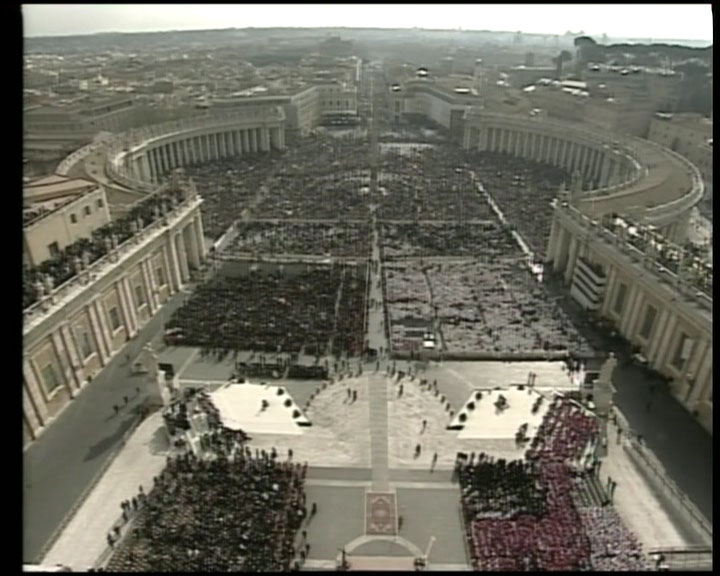
On 6th of April, the day before Pope John Paul
II's
funeral, news outlets reported that 2 million Poles were on their way
to Rome
for the funeral, that all non-official
vehicles
had been banned from the city, and that it was closed to visitors; Rome
was becoming a
sea of
people.
Many catholics
saw him as saintly and waving 'Santo Subito' flags wanted to have him
beatified
right away. Mainstream
media, especially
TV,
tended to eulogize Pope John Paul II and treat his demise as the loss of a great
world
leader,

President Bush and First Lady Laura Bush showed up in Rome, and TV had
shown images of them, ex-President Bush
senior,
and Secretary of State Condoleeza Rice sitting next to ex-President
Clinton (it
was hard to tell which of those two seemed the most discomfited by this
experience). Three US presidents in a row in pews in St Peter's
Church in
Rome ‘paying their respects’.
They were joined the following day by Prince
Charles, in line to become one day a competing ‘defender of the faith’,
who had
put back
his
wedding for a day, seated close to Robert Mugabe, and the reigning
monarchs of 10 countries, 57 heads
of State, 3 hereditary princes, 17 heads of government, the heads of 3
international organizations and representatives from 10 others, 3
spouses of heads of State, 8 vice heads of State, 6 vice prime
ministers, 4 presidents of parliaments, 12 foreign ministers, 13
ministers, and ambassadors from 24 countries who had
also come to the funeral.
Why did the funeral of Pope John Paul II
matter so much to these
visitors that they were prepared to
derange
their schedules to attend?
Was it because, at the papal funeral, like
echoed
like, they were honouring an operator in their own preferred style?

As
ex-president Clinton is
reported to have remarked, the late pope was ‘someone who knew how to
work a
crowd’.
Through my work
as a psychotherapist I have from time to time become aware of some of
the
contradictions behind the face of papal Catholicism that was so
explicitly on stage during Pope John II's funeral. Pope John was
adamantly against abortion and yet the Pro-Life movement, fed by
his papal authority, for all
its
benign focus on the value of fetal life, is the tip of the iceberg of
the
christian subordination of
women. As though those opting for
an
abortion were not likely to be deeply distressed about the action
they
were taking. Love would see that and meet it with compassion. I've
found that Papal
Catholicism
dogmatically spells out what it wants to see, or rather, excludes what
it
doesn't want to
see—anything
remotely reminiscent of womanly physicality, of women's bodies, of
women as
persons in their own right.
Feeling I needed to know more about the origins of papal catholicism, I
found a good source in
Elaine
Pagels Adam and Eve and
the Serpent. I discovered for example that St Augustine’s
hugely
influential take on sexuality 15 centuries ago was part of the
accommodation between the previously persecuted christianity and the
Rome that, following the conversion of Emperor Constantine, had become
enthusiastic about christianity. Papal Catholicism
continues the Augustine approach to what it means to be human and Pope
John
Paul
II re-enforced and embodied catholic denial of the body and
sexuality,
re-iterating the association of carnality and sinfulness, so that for
example,
some catholic women die of undiagnosed breast cancer because they are
unable
(feel it would be sinful) to examine their breasts by touch.
The misogyny of
papal Catholicism, with its
scarcely concealed disgust for
women's
bodies—was a posture I
had come across earlier in this enquiry, one very publicly and very specifically re-iterated during John
Paul
II's papacy.
In the convoluted reasoning of
this
essay about
why woman can never be priests, Cardinal Ratzinger, John Paul II's
theological enforcer, (the celebrant of his funeral mass, and more
recently,
his successor as pope) denies the
intrinsic value
of women, half the population of the world.
In an
earlier
Ratzinger
essay explaining why homosexuality is wrong, papal Catholicism
denies
the
intrinsic value of perhaps one seventh of the population of the
world who
experience themselves as gay or lesbian.
In these and
other texts, I had already seen the weight of authority which the 'magisterium' of Pope John Paul
II’s
papacy brought to its domination of the lives of millions of people within the sphere of influence
of papal Catholicism.
No to sex outside marriage. No to divorce. No to contraception. No to
abortion,
even after rape. No to condoms as a protection against HIV/AIDS, thus
ensuring
countless unnecessary deaths and orphaned children. No to women
priests. No to
married priests, unless they are converts from other churches.
Yes to ensuring young people remain ignorant
about
sexuality (some years ago, a doctor in a very Catholic village on the
west
coast of Eire told me that when local couples came to see him because
they
weren’t able to conceive, he usually found that was because they were
practicing anal sex). Yes to naming a basketful of church worthies as
saints.
Yes to actively centralising the institutions of the church, so that
when, a
sexual-abuse
scandal began to
break in the US Church, the senior clerics
hid the
perpetrators and papered over the accusations. And the Vatican rewarded
one of
the key figures in the cover-up with a sinecure in Rome.
As a psychotherapist, I see the intrinsic intelligence of
the body as
a vital human capacity, listening to it, and trusting it, can tell us what matters,
what
choices are
fruitful, and
what are problematic or damaging. By denying this 'wisdom of the body', I
began to see, papal
Catholicism was
able to colonize
and take
possession of its adherents' emotionality, consolidating its dominance by providing non-negotiable facilities such as confession for dealing with the problems thus generated. From this
perspective, the sex-abuse scandals in the Catholic church look to be a
poisoned
fruit of the church's centuries-long history of institutional dominance
and sexual repression.
Pope
John Paul II also
re-broadcast on
all wave lengths the christian location of spirituality as outside
the
embodied material world, insisting that such religious notions as
'God',
'Christ', or a
'Heavenly after-life' existed independently of humankind (a similar notion, that
mathematics exists independently of human mentality, has
recently been
challenged.) Both re-iterate the belief that
there
are aspects of our mental life that are outside nature, outside
embodiment. 'Out there' or as the then Cardinal Ratzinger's body
language demonstrated at John Paul II's funeral, 'up there'.

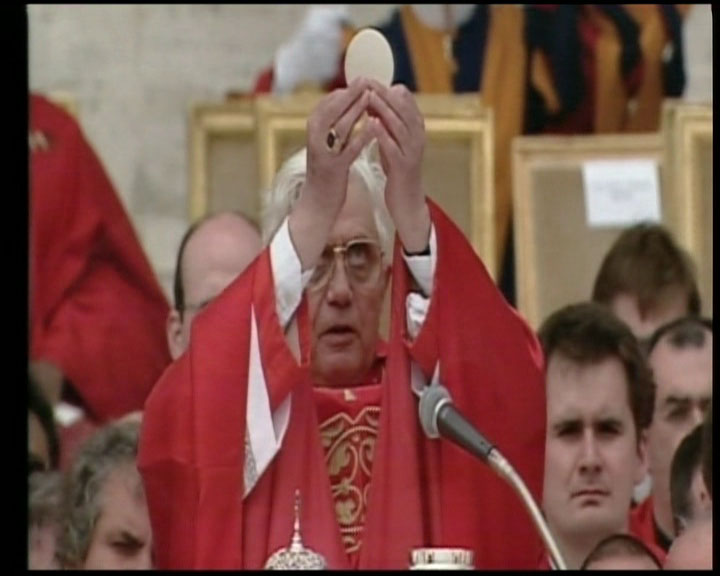
In my
experience, this
dissociation of the spiritual from the material and embodied, creates a
very
tense split in people who subscribe to it, so much so that for many
adherents, the
moral targets of
papal Catholicism function as production schedule for the manufacture
of guilt.
A plethora of feelings are generated that require recourse for their resolution to the already mentioned church resources such as
confession, penitence and prayer.
The more I saw
of the papal funeral events, the more I realized
the extent to which the papacy is an especially
pure and transparent example of domination—
Dominus,
Domine—for
papal Catholicism
domination, I realized, is intrinsic, spelled
out in
this and
countless other Vatican texts.
But was this
framing of the papacy as an
exemplar
of domination and harm too strong? I began
to think not. Looking at the big
picture—broadening the frame—meant including:
The church's promotion of
the
Crusades, still a
popular
icon
and a potent political factor in our times;
the
Inquisition,
renamed
but still at work and headed by Cardinal Ratzinger; the
church’s
historical denial of science - Copernicus, Galileo, Darwin; the
church’s part in the
demonizing and
killing
of at least eighty thousand women as ‘witches’; the
church's
evangelical collusion
in the
colonization and destruction of native cultures in Africa,
America
and the far east; the papacy's collusion with the German Nazi
regime,
including
assisting
the escape of Nazi
war criminals after 1945 ; the continuing propagation of
homophobic and misogynistic policies around contraception, abortion and
AIDS.
This amounts to a massive
history of the abuse of power and yet a
billion
plus people on this earth have signed up to the catholic christian
vision of human nature built on this history. Many more stand in its
shadow, as off-message clerics have found down
the centuries.
Matthew
Fox, founded Creation Spirituality and was expelled from the
Dominican order:
They gave me a list of complaints. Number
one, I'm a feminist
theologian. I didn't know it was a heresy to be a feminist theologian.
Number
two, I called God "mother." But I have proven that all the medieval
mystics called God "mother." Number three was that I prefer
"original blessing" over "original sin." I think they're
afraid that concept could put them out of business. Number four, they
said I
associate too closely with indigenous people. Number five, I don't
condemn
homosexuals.
Ferdinand
Regelsberger was excommunicated for ordaining female priests;
Tissa
Balasuriya, an Oblate priest from Sri Lanka was
excommunicated
in 1997
after
accusations of heresy, (he questioned the cult of
Mary as a docile, submissive
icon and said
that the church should be less arrogant towards other
religions) but was
reinstated
in 1998 after a
worldwide protest.
Many of
the
liberation theology priests working with the poor in South America
found
themselves invalidated and redeployed, or in the case of
Leonardo
Boff, 'silenced'.
Catholic women who have found a
priestly
vocation in themselves know that they are permanently barred from
that role
by Pope John Paul II and the people around him. (Cardinal
Ratzinger, now Pope Benedict XVI, who officiated at Pope John Paul's
funeral, wrote
this
text confirming that ordination of women priests was contrary to
the 'deposit of faith'.
Non-Catholics
who have fallen in love with a Catholic are very likely to find
themselves
negotiating, archaic and convoluted binding agreements about child-care
with
the church authorities before the church will endorse their love.
Juan Vaca, former US
president of the Legionaries of Christ, along with 30 other
seminarians under 16, claimed to have been sexually abused by Fr.
Marcial Maciel founder of the order. As a
Catholic
Reporter editorial outlines, these men, including two university
professors, a lawyer, and the order's one-time treasurer, await
any sign that the Vatican is taking seriously their accusations against
Fr Maciel, described as 'a dominant and domineering personality
overseeing a culture in which he demanded absolute and unquestioning
loyalty to himself'.
Fr
Marciel organised and accompanied Pope John Paul on his
visits to Mexico.
As you’d expect of an inquiry, before I started I didn’t know that this
study of papal Catholicism
would gradually become a catalogue of such papal horribilities.
Somewhat
naively I thought that these views were a maverick, outsider,
off-message take
on papal Catholicism, even, as some people might think, a rehearsal of
my
poorly
informed prejudice. At around this point in the writing I came
across a
series of articles that offered much the
same perspective and
that made
redundant much of what else I might have gone on to say here.
I realized that in my surprise at the feistiness and depth of
some of this critical writing that greeted the
funeral of Pope John Paul II, I was in danger of forgetting that there
was a centuries' old tradition of vigorous dissent from the papal
Catholic take
on the Jesus story.
What do I have to add to it?
Several related notions: that papal
catholicism does indeed amount to one of the purest and most
transparent forms of dominance; that it models and teaches how to
install and sustain dominance; and that it is currently facing, or
rather denying, a challenge on
the same scale as those from Copernicus, Galileo, and Darwin.
Flat-earth theology
Behind the eulogizing of
Pope John
Paul II, his Catholicism hides from, and keeps hidden, the rich
variety
of theory and knowhow about persons and personhood that has emerged in
the last
hundred
years or so, from those lines of human inquiry that we call
psychology,
psychotherapy and cognitive science.
From the
vantage points
of such psychological enquiry,
papal Catholicism is an institution that endorses and promotes a long
list of notions and behaviour that are dysfunctional and damaging to
persons and human relations—it
abuses power—it
promotes splitting/dissociation, projection, repression, displacement,
and denial
definitions,
more—and as
we'll see, it abuses the human capacity
for
trance.
For all its limitations
and contradictions, psychological enquiry has
been one of the most beneficial items of human flourishing in the last
100
years. Why does Catholicism and Pope John Paul II's version of the
papacy
reject psychological
knowledge about
humanity? It is not due to ignorance, this well
researched
Vatican
text about
post-modern
(New Age)
spirituality, recognizes that many strands of
psychological
development provide an alternative approach to the sacred in persons
and
daily life but
uses this insight to dismiss them. In
the face
of the openness and diversity of psychological theory and practice, I
guess the dogmatic, flat earth
theology of
Catholicism feels under siege. To see where this defensive obduracy
comes from and why it is so resistant to change, I
found I
had to back off into what I had learned about the history of
childhood.
Psychohistory
Historically, childhood
appears to have been severely traumatic for almost
all children and this is still true in many parts of the world—think of
present-day Iraqi or Palestinian children, or African children orphaned
by
HIV-AIDS. In
History
of Childhood Psychohistorian
Lloyd
deMause and nine other authors assembled very comprehensive
historical
evidence which
shows that until perhaps the last 100 years, abandonment, and
infanticide was common, (as abortion, it is still is) violence in
education was normal, and children were
variously seen as intrinsically evil, needing to be beaten into shape
or
punished until obedience was unquestioned,
more, more
i.e.
that
from our present day perspective, all children could
be held
to be severely traumatized, including by sexual abuse.
From my psychological perspective, what
this amounts to is
that until relatively recently,
all human beings had severely painful body memories of distress
dating from
childhood that were driving, inhibiting or distorting their adult
behaviour.
Added to this, because of the near universal trauma of birth, everyone
whatever their upbringing is likely to have
body
memories
that are comparably formative.
The human bodymind has
elaborate and very effective biological ways of surviving
such
trauma,
such as the
gating
of pain, however, there is a high
probability that the body memories of distress from such early traumatic
learning
will be
re-stimulated
by present time events.
This
means that developing ‘comfort
zones’, circumstances and behaviors that protect us
from this re-activation of traumatic body memories, are likely to be a
major
feature of adult daily life. Keeping this huge personal and
collective history of pain out of consciousness, while at the same time
trying to
account for the compulsive
human behaviours it drives, is
the
psychological soil in which Catholicism and other religions have their
roots.
Christianity as psychological defence
The notion that
Catholicism and other religions were defenses against embodied traumatization has been familiar to me for several decades, through the work of Frank Lake and
David Wasdell, what I hadn’t begun to see until recently was how they were propagated and what kept them in place.
How was splitting/dissociation, projection, repression, displacement, and denial being promoted? Looking at papal Catholicism through the lens of psychological enquiry, I realized that there much about it was reminiscent of a hypnosis training I had done some years ago; it seemed to entail a varied menu of enthrallment, spellbinding and the casting of spells, in other
words, trance induction—hypnosis. The stock in trade of stage
hypnotists and politicians of all shapes and sizes, it appears to be the core ingredient of papal Catholicism too.
This felt to be a promising line of enquiry—that while claiming to be
an institutional vehicle for
love and caring, Catholicism deployed trance induction to keep its
adherents enthralled. Charles
Tart in
Waking Up has called this spellbinding
consensus
trance.
Among the techniques prohibited to
ethical
hypnotists but
wielded effectively in the induction of consensus trance are: the
enormous
amount of time devoted to the induction (years to a lifetime), the use
of
physical force, emotional force, love and validation, guilt, and the
instinctive trust children have for their parents. As they learn myriad
versions of 'the right way to do things' -- and the things not to do --
from
their parents, children build and continue to maintain a mental model
of the
world, a filter on their reality lens that they learn to perceive
everything
through (except partially in dreams). The result leaves most people in
an
automatized daze. Tart,
C. Waking Up, Boston: Shambhala, 1987
This is not
to argue,
as current psychology would support,
that we can free ourselves entirely from such trance states, but only
to
recognize
that one
of the fruits of psychopractice is to become aware of how much of life
is
lived on
automatic, shaped by the trance inductions, the ‘spellbinding’, or
‘regimes of
truth’ we absorbed as children. If we accept this then a vital life
task
is to
install an
evolving,
enquiry-based process of awarely developing or adopting our own ‘rules
of
thumb’ around survival, recovery and how to lead a flourishing and
fruitful
life. Pope John Paul II, like all his predecessors explicitly closed
the
door on
such enquiry. The Truth has been revealed. Worship. Obey.
Faith
If
Catholicism (along
with other sects) is an institution
that provides a psychosocial defence against embodied traumatization,
how does
it do this? How does the psycho-defence work?
The key discovery so
far for me in this enquiry, has been
that the entrancing element that matters, i.e. take it away and the
whole
edifice falls down, is ‘faith’. The Catholic consensus trance is
induced and
maintained through the phenomenon of ‘faith’.
Pope John Paul II was
very explicit in his endorsement of
the Catholic articles of faith which are available in a vast Vatican
Catechism
website that has 2865 items.
Here is the
table of
contents.
Some
random samples:
150
Faith is first of all a personal adherence
of
man to God. At the same
time, and inseparably, it is a free assent to the whole truth that
God has
revealed.
153 ...Faith is a
gift of God, a supernatural
virtue
infused by him.
157 Faith is certain.
It is more
certain than all human knowledge
because it is founded on the very word of God who cannot lie.
From a psychological perspective, ‘faith’ appears to be a
religio-spiritual
equivalent of morphine, an anesthetic, a painkiller. Faith that papal
catholicism's
version of the Jesus story is revealed truth, legitimized by the
supernatural event of the resurrection. So far as we hold faith in
'sin', 'repentance', 'forgiveness of sin', 'salvation' etc the church
provides an pain-free end point, 'heaven.' Out of sight beneath this highly conditional promise is the
subtext which tells us that pain,
especially psychic pain due to political oppression, i.e. domination,
is
a fact
of life and you better get used to it (and no matter how bad you feel
it is nothing compared with being crucified). The church's global
obsession
with pain
and suffering (see crucifixation below) absorbs (sublimates) and
helps anaesthetize
embodied pain but excludes enquiry into, or resolution of its origins.
Because it asserts the unique possession of god-given truth, god being
all knowing, all powerful, papal Catholicism tells
us there is nothing whatever that we can do
to change
either ourselves or the world we live in, or indeed that there is
anything else worth
knowing about humanity. There is only consolidation,
recycling, conservation, obedience, adoration, worship, and repetition
of the
articles and practice of 'faith'.
161
Believing in Jesus Christ and in the One
who
sent him for our salvation
is necessary for obtaining that salvation.
143 By faith,
man completely submits
his intellect and
his will to God. With his
whole being man gives his assent to God the revealer. Sacred Scripture
calls
this human response to God, the author of revelation, "the obedience of
faith".
Telling and re-telling biblical
stories, preaching, ceremony, bible study, hearing mass, prayer,
worship,
adoration and devotion to the artifacts of ‘faith’ such as saints,
underlines,
reinforces and consolidates the trance that enables acceptance of papal
Catholic truths as
god-given, and
thus 'natural' and 'inevitable'.
Faith generation
I hadn't been long settled in seeing how the dual roles of
spellbinding and
faith sustain the dominance of papal Catholicism when I came
across a startling pointer to the origin of christian faith.
Elaine
Pagels details how in the first century after Jesus' death there were a wide variety
of
groups with
very diverse versions of christianity. One strand of these groups, the gnostics, broadly saw christianity as matter of personal inquiry and
self knowledge,
gnosis, finding christ in themselves. Some of the fragments of what is
known about gnostic christianity resemble core ideas of current
psychology. Here is Jesus speaking to Thomas:
...examine
yourself so that you understand who you are...
....For whoever has not known himself
has known nothing, but whoever has known himself has simultaneously
achieved knowledge about the depth of all things.
Gospel
of Thomas quoted in Elaine Pagel The Gnostic Gospels
p48
Abandon
the search for God and creation, and similar things of that kind.
Instead take yourself as the starting place. Ask who is within you who
makes everything his own saying "my mind," "my heart," "my God." Learn
the sources of love, joy hate and desire... If you carefully examine
all these things, you will find [God] in yourself.
Hippolytus Refutation of All Heresies quoted in Elaine Pagel The Origin of Satan
p167
For gnostic christianity the
Jesus story was a metaphor for spiritual development, and the gospels a
programme for how to do it. For them spiritual authority was
personal,
intimate, derived from experience. This, as you'd imagine led to a democratizing of spiritual
authority with a wide range of creatively ingenious ways of taking
forward the Jesus story on the basis of lived experience.
By contrast, because
it is counter intuitive, contrary to commonsense,
insisting that the resurrection of Jesus is literally true requires the creation of an institution of faith. As Elaine
Pagels points out, because
the disciples
who claimed to have seen and touched the risen Christ had exclusive
ownership of
this version of the Jesus story, from then on acceptance into this sect of christianity required a quantum
jump of faith into believing their supernatural version of the Jesus story was literally true. The handful of
disciples who claimed the resurrection experience embodied
unchallengeable authority. Whatever the disputes about the meaning of
parables and other teachings here was proof
of life after death. Secure in the faith that there was an
afterlife of peace and plenty, early christians were able to endure
appalling cruelty and death with an equanimity that astonished their pagan neighbours.
As Pagels tells the continuing story of the politicising of
christianity,
by 170 CE the 'literally
supernatural'
version of the Jesus story was already sedimenting into a christian
orthodoxy that drew its authority from the apostolic copyright of the resurrection story. By the end of the second
century a
centralising, unifying, catholic, ie universal church, tracing a line
of authority back to the Apostle Peter, was seeking to eliminate and
suppress
all other versions of the Jesus story than the supernatural one. Through this insistence on a supernatural take on the
Jesus story, the seed of domination christianity was sown and began to germinate. As,
in the following centuries, christian
church leaders moved from being persecuted by the police to commanding the police,
heresy, being off message, as we'd call it today, became a
life-threatening criminal offence. Except
for orthodox treatises on their errors, the gnostics disappeared from
history
for almost two millenia.
After being
adopted by the Roman Empire
following Constantine's conversion in 313 CE, in papal Catholicism began to resemble the institutional organisation we know today. Its structure of monarch, bishops, deacons, and laity,
mimicked the way the Roman army was organised. By the 5th Century this alignment of authoritative spiritual power with
hugely successful political power seems to have become irresistibly
attractive to western Europe.
But however
ecstatic the initial encounter, faith in the supernatural fades. Feeding faith, recovering
faith and challenging the faithless, became essential activities of the
emerging papal christianity. Hypnosis, a branch of modern psychology points to a reliable way of
doing this. While about a third of the population have little
capacity for trance, around a third of the population can go into a
moderate trance, and another third into a very deep trance. As I see it
papal
christianity has accumulated a rich mix of trance inductions, ceremony,
hymns, psalms,
prayer, music, liturgy and theatre and repetitions of the Eucharist,
that install and reinstall in the
faithful the belief that the supernatural truth of papal christianity
is the only truth.

Prenez et mangez: Ceci
est mon corps
(Transl. Take and eat: This is my body) |

| Cardinal Ratzinger as he
then was, celebrates mass at the
funeral of Pope John II |
In
a hypnotic trance the subject is abstracted from ordinary awareness and
absorbed in the inner world with the feelings, images, and impressions
that
populate it. What those feelings, images and, impressions are depends
on the
expectations that are implicitly suggested—or explicitly imposed–by
the
hypnotist and
by the hypnotic context.
The trance
feelings, images,
and impressions become a powerful reality, and the more the subject is
abstracted from ordinary awareness the more powerful that reality will
be.
Tart,
C. Waking Up, Boston: Shambhala, 1987
The
abstraction from
ordinary awareness for trance
inductions that install and maintain faith requires
icons— objects to take
projection—in papal catholicism, disciples,
saints, angels, demons, etc and
imaginal
landscapes—churches, where the stories of faith can be re-enacted
through
ceremony, prayer, music,
story-telling,
parables, psalms, hymns and sermons. Catholicism provides a rich
tapestry of both icons and landscapes.
Icons
I have come to see papal Catholicism's iconic images of disciples,
saints,
martyrs, the virgin mother and her son, plus the characters of the
bible stories,
as ’psychic dolls’, or 'alters' as
Lloyd deMause calls them. They are created and re-created as generation after generation of worshipers,
regulated by the
fathers who administer the church, direct
multiple projections of devotion, adoration, obedience and faith
towards them. Here are a handful of examples collected in
the last couple of years.

O Jesus que
nous adorons maintenant caché dans l'hostie donnez à nos
yeux de contempler un jour votre visage dans la splendeur de
votre gloire
(transl. O Jesus whom we adore at present hidden in the
Host. Grant to our eyes one day to see your face in the spendour of
your glory.
|
.
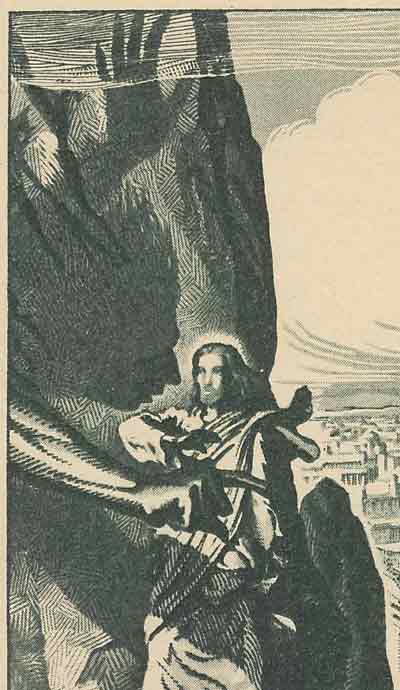
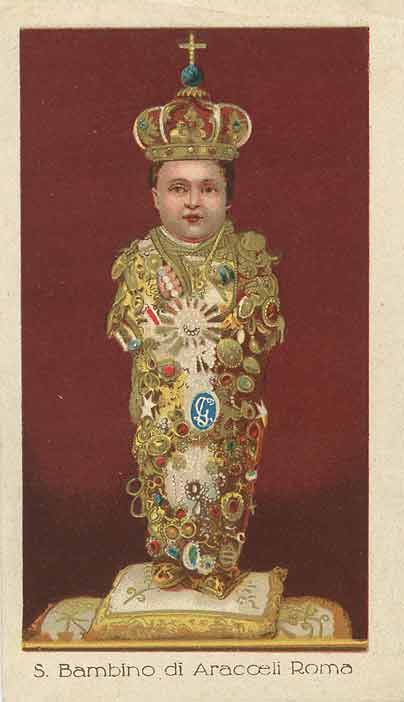
| In this
mass card (left) Jesus struggles to free himself from the Satan's
temptations. |
St Bambino
di Aracceli Roma
|
Crucifixation
Foremost
of the icons
of catholic christianity is the
crucifixion of Jesus of Nazareth—along with the resurrection, the
central image around which papal
catholicism
rotates.
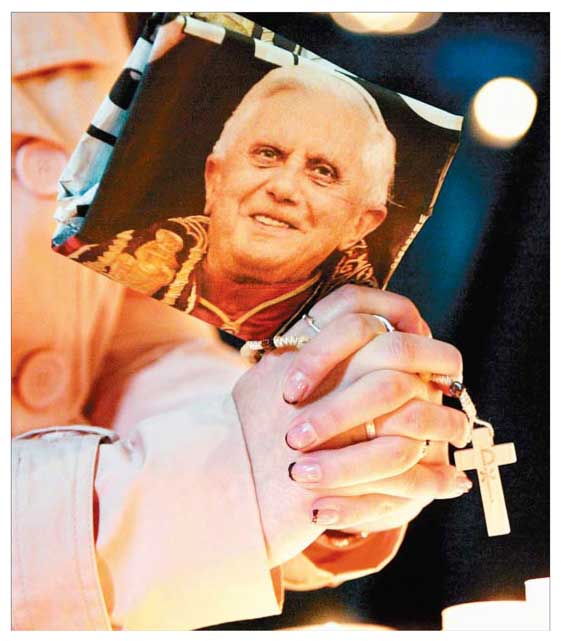

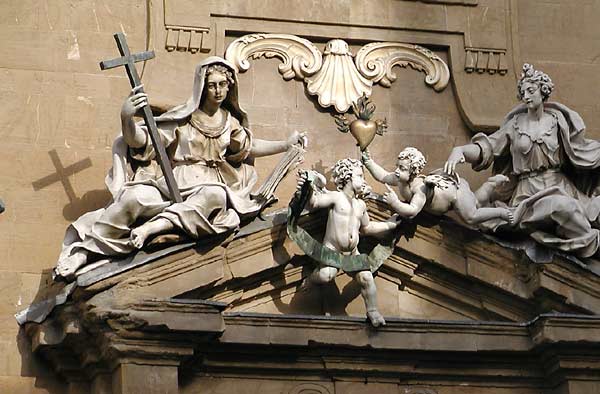

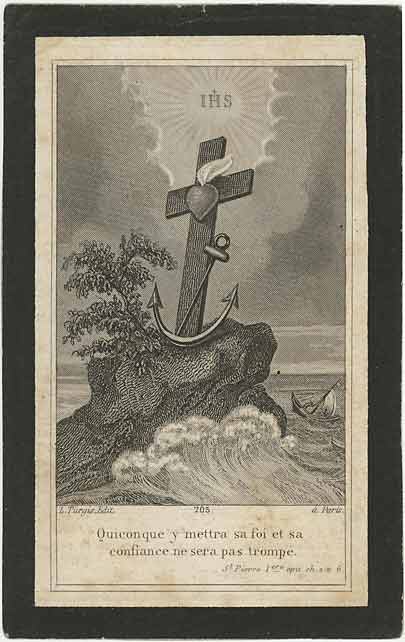
Sancta
Rita, rogad por nosotros
Transl. Saint Rita pray for us |
Quiconque y
mettra sa foi et sa confiancene sera pas trompé
Transl. Those who put their trust in me will never be betrayed. |
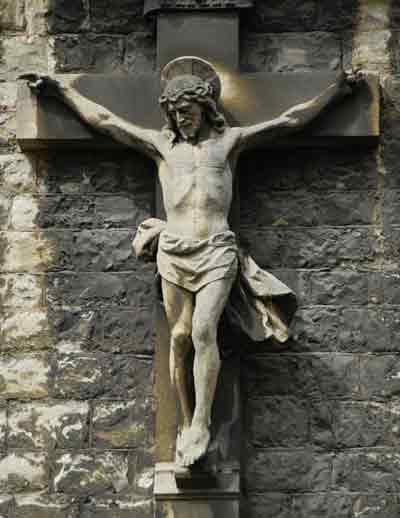 This
crucifixion image that commemorates
This
crucifixion image that commemorates
the dead of the Great
War, is on a church wall
200 metres from where I’m writing. Every
time
I
leave
and return home I am confronted
with this man's suffering and
agony.
 This crucifix is from a web
catalogue that
This crucifix is from a web
catalogue that
has a hundred or more to choose from.
Why is the crucifixion of Jesus such
a potent image for christians?
One of the lenses
of
psychology—pre- and prenatal
psychology and birthwork—argues that
the crucifixion of Jesus of Nazareth has become a profoundly potent
icon
because it echoes, resonates with, and makes sense of the acute pain
due to
trauma, held in the bodies of people down the centuries, especially and
particularly, the pain of being born. David Wasdell provides a detailed account of this
here
The universal congruence of early imprinting gives rise to a common religious language of symbol, myth and ritual which crosses boundaries of time, space and culture. The reified constructs of religious belief serve as defences against the repressed anxieties of our common primal history. Reinforcement of those defences serves only to enhance the unconsciousness of humanity and to encourage the repetitive displacement and acting out of primitive trauma in the conduct of our social systems.
David Wasdell
The resolution
of this universal human experience as we leave the dark universe of the mother's body and enter
the light universe of daily life—out of darkness into light—is a
recurring theme across christianity:
He, who is the Light of the world...
“ a light that shines in the darkness, a light that darkness could not overpower”. (Jn. 1:5).Most Rev John Magee, Bishop of Cloyne
...the final step in our journey out of the darkness of sin and death into the 'bright promise of immortality'. Catholic Ireland
I was, at length, "led out of darkness into light," the marvellous light of God;
Rev. Asa Mahan President Oberlin College 1835
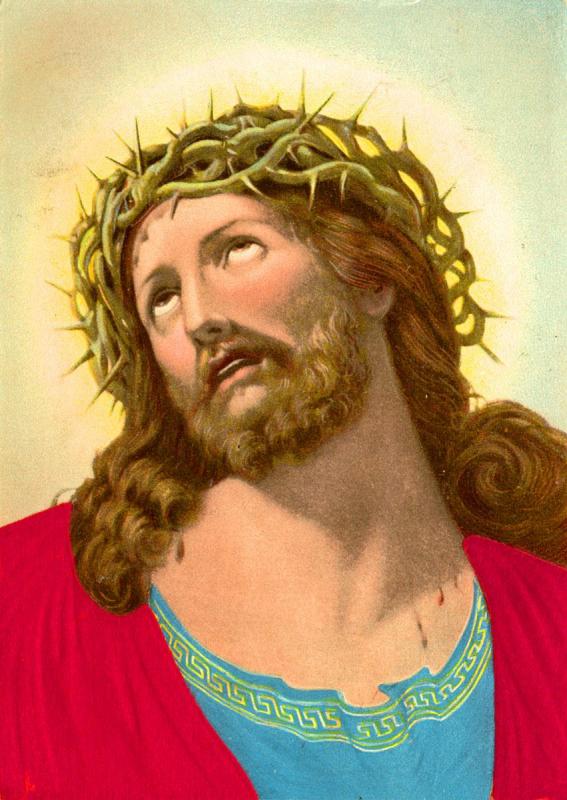
In this de-construction of the Jesus story,
the ‘crown of
thorns’ carries
an additional iconic resonance, with the acute foetal pain involved in
the transit
of the
cervical vaginal exit from the womb.
The bestseller on this
Crown
of
Thorns web site is a full size crown of thorns guaranteed
to have been
made from a descendant of the original Jerusalem thorn bush

After the resurrection, for the faithful, supernatural proof that there
is life after
death, Jesus ascends into Heaven. Heaven, the residence of God and the
Holy Spirit holds the promise of a suffering-free existence.

In this anti abortion poster
Heaven above waits
to receive aborted foetuses rescued by angels
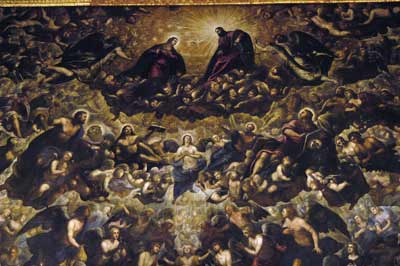
From my pre and perinatal psychological
perspective, the notion of Heaven, pictured here in a huge
Venetian mural, is an icon that resonates with, and gives a name to the
body memories of
the foetal ‘paradise’ of the first two
trimesters of
fetal life, where for most people, all bodily needs are being
effortlessly met
through the mother’s biology.
Complementary to Heaven, there is the notion of Hell, an imaginal landscape of eternal pain and punishment. This resonates with, and gives a name to, the galaxy of
painful bodily experiences of pain due to foetal distress and abusive child rearing and
the accumulations of what historically,
for many people, seems often to have been a hellish experience of daily
life.
.
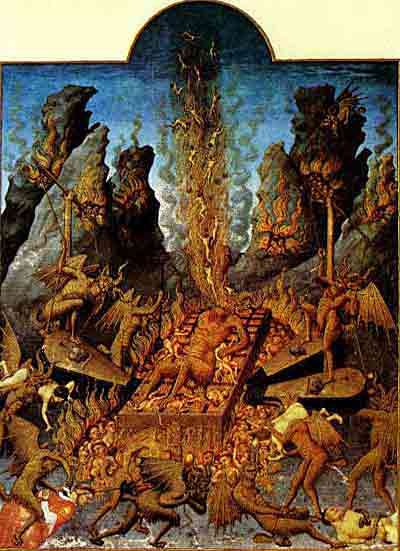 Duc de Berry Book of Hours
Duc de Berry Book of Hours
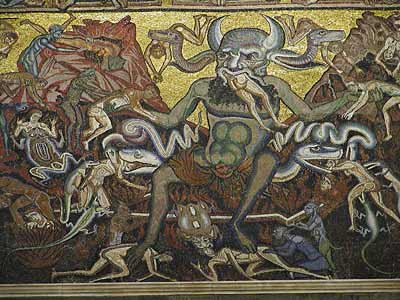 This mosaic of Hell is in the Baptistry in Florence
This mosaic of Hell is in the Baptistry in Florence
Alongside all
this sits, what I have
recently begun to recognize as the
undeclared
pantheism of christian sainthood.
Top of the list Mary, the 'good mother'
that,
as psychohistory shows, historically few, if anyone, had. Until relatively recent times absent
fathers were normality, mothers did the enforcing and socialising of
children. Mary
provided an idealized mother who can be appealed to for the sympathy,
support, commiseration and caring that was
missing from either a person's childhood, or their daily life, or both.
This seems to have been especially relevant for the
multitudes of women struggling to
survive hurts,
injustices and grief in a male dominant
world.

'May Our Lady model of purity, bestower of graces,
obtain for you all
heavenly gifts.
Mary, the only high visibility icon of papal
christianity that has feminine resonance, is loaded with
contradictions, beginning with the virgin pregnancy—could
claiming divine intercourse have been a neat way of avoiding being
stoned to death for adultery? And to delight misogynistic eyes, here is
a woman undefiled by sex. How were the poor faithful supposed to go
forth and multiply?
This ceramic of the Virgin Mary belongs to a home for
abandoned children
in Florence, open for four centuries until 1870. It seeks to entrance
inmates into accepting two of the prominent features of papal
christianity: hubris and
servility.

The Christ child holds a
scroll reading 'I am the light of the
world,'
Mary's finger points to a message that tells
women that 'the Lord has been mindful of the humble state of his
servant'. |
And then
there are the iconic 'fathers', the Father in Heaven and the Holy
Father... and
the father in the parish church.
Imaginal landscapes
The trance inductions of papal Catholicism, are centred on
churches, theatres where its rich imaginal landscape of liturgy and
ceremony
are organized and orchestrated.
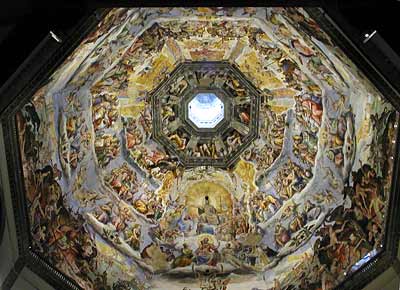 The Duomo Florence
The Duomo Florence
The population of this landscape includes:
(note the capitalization
signaling
iconic value) a Holy Trinity, a Holy Ghost, a Holy Book, a Son, and a
Father,
the Virgin Mary, The Lord, Saviour, The Devil, Satan, Angels, Saints,
Miracles, a
Virgin birth, Purgatory, Hell,
Life
after Death, A Garden of Eden, and Heaven.
But when on the tourist
trail we visit the imaginal spaces
of ancient i.e. pre-protestant churches and cathedrals, there is little
to inform us that historically, for the general population, hearing
mass in
the
churches of christendom was to be witnessing a remote
ceremony, with chanting, bells and incense, conducted by priests
distant and out of sight behind the altar screens. A process that
underlined
the kind of ambiguity that an effective screen for projection requires
if it is
to keep alive adherents' psychic dolls.
Going
to
church—'hearing mass', taking communion, and
contemplating the panoply of saints, having a Son of God who shares our
pain, having a Book that details what is right and true about life, and even
that
there is an end to pain in the heavenly after-life to come—glued in
place by
the trance inductions of faith—all these provide a
spell-binding set of potent iconic
characters set in a
rich imaginal landscape. Together they form a very effective receptacle
for the projection of inner turmoil and pain.
Dominance damages
Historically
papal Catholicism may have been an adequate way of meeting the survival
needs
of, by
modern standards, comprehensively traumatized populations (for details
see Lloyd deMause:
The
Evolution of Childrearing). In the light of current knowledge about
persons and how
they
develop, Catholicism’s archaic, pre-psychological insistence on the
exclusive
ownership of the Truth about persons now seems to me equally
comprehensively
damaging:
- in direct
contradiction of the
Jesus
message of ‘love thy neighbour as thyself’, papal Catholicism models
and
broadcasts
dominance, legitimizing
it as natural and inevitable, perpetuating the damage that
arises due to such abuses of power wherever they occur;
- papal catholicism is palliative not
transformative;
- the group consensus trance it
embodies is
the antithesis of inquiry and disallows innovation;
- despite all this, too many world leaders still give adulatory attention to
papal Catholicism and some are, at least notionally,
signed
up to it.
- the institutional culture papal Catholicism
models and promotes versions of human power
relations that,
alongside demeaning and side-lining women, half of the population of
the world,
helps continue, by other means, the European colonization of the South.
The
Vatican curia has 114 white western Cardinals (38 of them from Italy)
24 from
Africa and the middle and far east and 28 from 'Latin' America. And
might it be racist too? A devout catholic I know,
recently returned from Poland, reported that the
grass roots
view there on
the recent
election of Cardinal Ratzinger as successor to
John Paul II, was that 'it was a choice between a sick man and a black
man, and of course the sick man won'.
- the papal
monarchy, like
other monarchies before and after
it, is damaging because it denies self determination, the power of
persons
themselves to find, or create, a spirituality that meets their needs,
rather
than the needs pre-ordained by a remote, dogmatic
institution.
Especially, through the splitting of spirit from body, it also tends to
close off
the essential daily task of finding of the sacred in the secular, a
task
that I
feel is now vital for human and ecological survival.
- papal
Catholicism's
notion of ‘original sin’, an
artifact of the political
accommodation
between christianity and imperial Rome and its
companion, ‘evil’, contribute to a profoundly pessimistic model of human nature.
- Buying
into the trance inductions of crucifixation and ‘original sin’ and
‘evil’, supports 'bystanding' the damage that cultures of domination
such as papal Catholicism entail. We
don't
have to take responsibility for interrupting the
ugly truth that childhood violence and sexual
abuse
often lay down intolerable bodymind pain that some people feel
compelled to
re-enact in violence on others through murder, assassination and
warfare. We can collude with others in failing to take account of the
extent to which cultures of domination such as papal Catholicism are taking us in the direction of
ecological disaster.
To summarize, the Catholicism of John Paul II is
damaging because it provides a consensus group
trance way of
containing or defending ourselves against the hurts, humiliations,
confusion,
sadness, fear and anger that we suffered when we were young, and maybe
not so
young, and which we carry with us as body memories and thus body
posture,
character, values, beliefs, and personality formation. The earlier and
more traumatic the
hurt,
the deeper it takes root in the formation of personhood and the more
likely it
is that current events that echo the original situation will
're-stimulate'—trigger regression in us to experiencing that hurt
again.
Since none
us wants this, we do what we can to keep away from such
situations, through
aversion, a built in compulsive flinch/flight from, or a compulsive,
needy
clinging on to anything or anyone that promises to keep us out of the
early
traumatic feeling. Papal Catholicism does this very well,
ensuring that we don't develop the emotional competence that would
enable us to attend to and resolve the occluded history rather than
hide from it.
Flight from modernity
Papal Catholicism, an arm of 5th century imperial Rome that
intrudes into the 21st century, is understandably in flight from
modernity, it
is
intentionally a pre-modern, pre-scientific,
pre-psychological institution. This
would be
fine by me if it was only one voice at the global meeting of minds
but this
is a loud bullying voice, ruthless in its love of power.
Its compulsive
holding to its archaic political origins denies, and is intended to
deny,
the opening up of human rights, the extensions of democracy and human
knowledge of the last century. It denies this because to embrace it
would undermine its dominance. And yet what at root is the modernity it
denies?
Yes, there are still injustices and contradictions, but the
developed
world features innumerable interlocking technical and ‘knowledge
cultures’
—traditions of
research
and inquiry—built
on several centuries of human research, in physics, mathematics,
astronomy, biology, medicine, sociology and psychology. Even
though corporate colonization of knowledge, or
strangulation of it at birth, is common, the fruits of these cultures
of
inquiry
amount to an astonishing flowering of humankind that is becoming
very widely
diffused and enjoyed.
One of the fruits of
such enquiry is the sharpened perception that single big
ideas—single accounts of how and why—are likely to denote tyranny—the
imprisonment of
intelligence, not infrequently in steel and concrete gaols. Papal
catholicism is ultimately in denial of the realization that at this
point in history the
intellectual territory of single big ideas is irreversibly mutating
into the uncertain
landscape of post-modernity,
where
human survival depends on meaning and value being more and more
negotiated rather than dispensed. A world view that paradoxically appears to closely resemble that of 1st century gnostic christianity.
And
yet threaded
through these, albeit improved,
accounts of the worlds we inhabit, domination still seems to prevail,
and the
accumulations of damage due to dominance-driven living continue to sediment into the
impending
catastrophe of humanly generated global warming.
Which brings us back to papal Catholicism. In modelling top down
hierarchical bullying, both institutionally and in its compelling
trance inductions, papal Catholicism insists on a fatally attractive apolitical equation—that
change, particularly if it involves social justice, is not only
impossible but wrong. This is
not to blame papal Catholicism for our impending ecological threat but
to see
its ethos of dominance as feeding the imperial,
bullying,
colonizing approach to nature which, literally in the name of
god, is a
precursor of the
ecological
damage we are confronting today. While promising a solution to human suffering through obedience to the tenets
of faith, it actually epitomizes the
over-arching
problem humankind faces—that dominance damages.
Conclusion -
Brand managing human nature
In claiming possession
of a
uniquely ‘true’, or ‘correct’ vision of spiritual truth while denying
its
psychosocial origins, the
papacy of
John Paul
II
propagates
a way of framing human
nature that
institutionalizes,
behind declarations of the power of
love, the reality of the love
of
power.
However papal
Catholicism is
not only a living embodiment of the love of power, it also
teaches
us how to manage political power. The Vatican, proprietor of
christianity, perhaps the biggest and first among all brands, was an
early,
if not
the first, developer of brand management,
How does this apply to papal Catholicism? Brand management
functions through attaching an entrancing feeling or quality to a
product or service. In the case of papal catholicism consumer attention has already been flooded by centuries of positive
feedback
loops (the more we hear of a notion or an idea, the more it seems to be
true) through preaching,
teaching and evangelizing christianity. Protecting the brand through iconic resonance with saints and the 'deposit of
faith' as the Vatican calls it, plus re-iterations of exclusivity
and the elimination of rivals and dissent—ensures that papal catholicism holds its place in the
spiritual marketplace.
Because so many people take dominance in human relations to be natural,
in
such a brand management
approach
to truth-telling, the trance inductions that get financed and
institutionalized, such
as the papacy that we examine here, seem overwhelmingly likely to be
those
that shut down open enquiry and that preserve, extend and entrench the
power status quo, typically
that of
top down authoritarian relating.
The phenomena of
mass communication of the last 100
years, epitomized by the media coverage of John Paul II’s funeral, challenge papal Catholicism by bringing other world views into catholic
living rooms but it also hugely amplifies its capacity to
promote its
brand of christianity—to generate, sustain, and deepen its
spellbinding trance
inductions. Through
them, huge
populations in post-colonial South America, Africa and the
Far East
have come to subscribe to a damagingly narrow range of intrinsically
western
notions about what is human and natural about humankind and the planet
we
inhabit.
So far as it is
domination that is regarded as natural and
inevitable, this amplifies an especially dangerous situation. Not least
because
it provides a parallel 'moral' model supporting that of the
George
W. Bush administration,
the US military corporate imperium and its
globalizing allies, who
are also presently trying to impose the godified righteousness of a
'new
world
order' on the entire planet, while ignoring the
over-arching threat of
global
warming.
In an earlier draft of
this piece (most of this text was
written in the days after Pope John Paul's funeral) I wrote:
’So far
as Catholicism remains resolutely pre-psychological, (and at
least in
Europe, in decline) we could expect it be even more fundamentalist in
its
denial of the power of love and more devoted to the institutional
protection of
it gives to the love of power. Look for signs of this in the choice of
a new
pope.’
Since then came the
news that Cardinal Ratzinger head of the present day papal inquisition,
headlined as '
God's
Rottweiler' - Daily Telegraph and the
'Vatican's
enforcer' - National Catholic Reporter, close friend of Pope John
Paul II and thus someone who no
doubt
had a big hand
in the
selection of the almost all the cardinals who voted for him, has been
elected
as John Paul's successor.
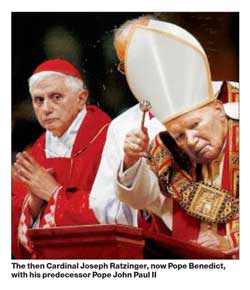
Leaving aside the
religious faith
dimensions, or the mafia qualities of the Vatican curia, behind all the
spells
and incantations, these men wearing the silk threads of
infallibility on
moral issues, are in the modern corporate business of defining what is,
or is not,
human nature, what behaviors and relationships are human and natural.
For any
such power, to be concentrated locally as it is in Rome with the global
reach
of international papal Catholicism, especially if it equates eternal
with
inevitable,
is an ever-present danger. Domination damages.
In case you are inclined to see this
present line of enquiry as
inadequately
rooted in other research, I'll end with George Lakoff’s almost poetic
unravelling of the christian faith consensus trance as a metaphor.
MORAL
ORDER
The metaphor of Moral Order fits
naturally with the metaphor of Moral
Authority, as well as with the literal parental authority central to
the Strict
Father family. This metaphor is based on a folk theory of
the
natural order:
The natural order is the order of
dominance that occurs in the world.
Examples
of the natural order are as follows:
God is naturally more powerful than
people.
People are naturally more powerful than
animals and plants and natural
objects.
Adults are naturally more powerful than
children. Men are naturally
more
powerful than women.
The metaphor of Moral Order sees this
natural hierarchy of power as
moral. The
metaphor can be stated simply as:
• The Moral Order Is the Natural Order.
This metaphor transforms the folk
hierarchy of "natural" power
relations into a hierarchy of moral authority:
God has moral authority over people.
People have moral authority over nature
(animals, plants, and natural
objects).
Adults have moral authority over
children.
Men have moral authority over women.
.....
The Moral Order metaphor plays a
crucial role in an important
interpretation of
the Judeo-Christian religious tradition. It is an entailment of this
metaphor
that God cares about human beings in the same way as parents care about
their
children or shepherds care about their flocks or farmers care about
their
crops. Logically, after all, there is no reason that a supreme being
should
care about lesser beings. But if the order of dominance is a moral
order, then
God does care about mere mortals; setting the rules and enforcing them
is how
he shows he cares, and in return for his care, we owe him obedience.
The consequences of the metaphor of
Moral Order are enormous, even
outside
religion. It legitimates a certain class of existing power relations as
being
natural and therefore moral, and thus makes social movements like
feminism
appear unnatural and therefore counter to the moral order. It
legitimates
certain views of nature, e.g., nature as a resource for human use and,
correspondingly, man as steward over nature. Accordingly, it
delegitimizes
other views of nature, e.g., those in which nature has inherent value
.
George Lakoff Moral Politics 1996
__________________________________________
Media
comment on the papacy of Pope John II
Polly Toynbee 8th April 2005
...
a
modern, potent force for cruelty and hypocrisy.
Here is a long, well-researched
Mother Jones article
detailing the
CIA's
involvement with the Vatican from WWII on.
Jonathan Steele Friday April 8, 2005
We
are
rewriting the history of communism's collapse. It was Gorbachev,
not the
Pope, who brought the system down
Terry
Eagleton
The
Pope has
blood on his hands The Pope did great damage to the church, and to
countless Catholics.
Matthew Fox
Reflections
on Pope John Paul 2
Peter
and Margaret Hebblethwaite, and Peter Stanford
John
Paul II Obituary:
The Guardian
Ellen Goodman Washington
Post Writers Group
Pope
John Paul II
Cardinal Ratzinger Fan Club
Yes, there is one! Here is a sample extract:
'...
As Grand Inquisitor for Mother Rome, Ratzinger keeps
KEPT himself busy in service to the Truth: correcting theological
error,
silencing dissenting theologians, and stomping down heresy wherever it
may rear
its ugly head -- and, consequently, had received somewhat of a
notorious
reputation among the liberal media and 'enlightened' intellegensia of
pseudo-Catholic universities....'
Cardinal
Ratzinger - Could the Next Pope Be a Nazi?
Some blog reflections on the papacy that are more intelligent than
the
title suggests.
Joan Chittister,
OSB
, Antigone
or Ismene: the
new choice
Paul Collins,
Australian theologian and broadcaster
argued
at the
intriguingly titled
We are Church group
press conference during
papal
election week that:
“the
legacy of John Paul II... was
“reactionary, with no sense of contemporary theology, biblical studies
and church history.” There was “no demonstrated understanding of
the
historical conditioning that gives context to all philosophy, ethics,
and theology.”
Cardinal
Ratzinger, he told reporters, “while profoundly aware of recent
developments in western theology, shared the same historical amnesia.”
...the Wojtyla papacy has been
an extreme realization of papal extremism...
...the
curia itself must be abolished. As a relatively late invention of the
17
century, spawned in a period of absolute monarchies, the centralized
departmental structure “is not constructed in a way that can respond to
modern
questions.”
Nor, Collins implied, can they, coming out of a mind set formed
in a
royal court, reform themselves... the health of the church… is in
danger of
suffering from too much papalism, excessive centralization beyond any
historical norm… and a male-centeredness that makes invisible half the
population of the world.
Professor Adriano Valerio, a professor of Church History at the University of Naples
and
President of the European Society of Women in Theological Research, pointed
out at a
the same press
conference
that there are 600 women
Catholic theologians
in Europe who are studiously ignored by the Vatican and can only have a
voice
in secular academia:
“Women
have
spoken and written texts that are invisible today,” she said. “They are
lost to
the historical memory of the church. The first thing a new pope would
have to
do is to give people freedom of speech. Women theologians have none in
the
church. If she speaks in public, it’s because she speaks at a secular
university. If she taught in a Catholic university and said these
things, she
would be punished. This includes males who themselves support women's
ideas, as
well.”
And then a few weeks later, there was the reception in some media of
John
Paul II's
successor.
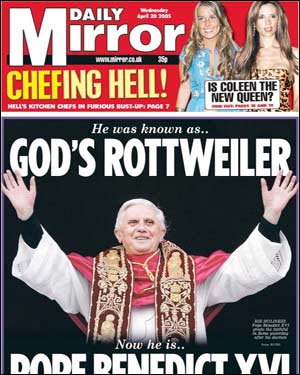
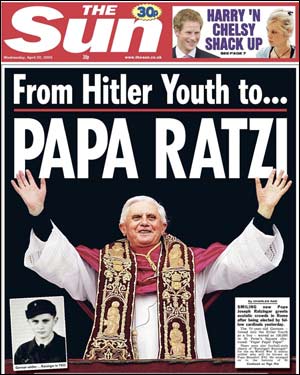

There are 0 writeback comments for this entry
posted at: 12:19 | permanent link to this entry
Fri, 08 Jul 2005
Cultures of domination
The
Holy Enemies of Pax Americana, its
mirrors in militant
fundamentalism, and
papal Catholicism's love affair with power all seem transparent examples of institutional domination. So much so that we can fail
to notice that the excesses of the imperia we have elected, or adopted,
or had thrust upon us... torture, state terrorism... the killing and
traumatization of civilians... are on a
continuum that includes the world we inhabit and support.
I call this continuum, a
culture
of domination, a multi-threaded mix of custom and practice,
close at hand, in us and around
us, that makes the bullying, victimhood and damage of domination
seem natural and inevitable.
As evidence of this naturalisation, to bring it into awareness, I
collect images of my local cultures of domination. Take a look at the selection
of them below. I've found, as I hope you will, that rather than
seeming to be a given, like the weather, by bringing them out into the light of day they
become more susceptible to choice, interruption and
confrontation. And less undermining of 'living from love'.
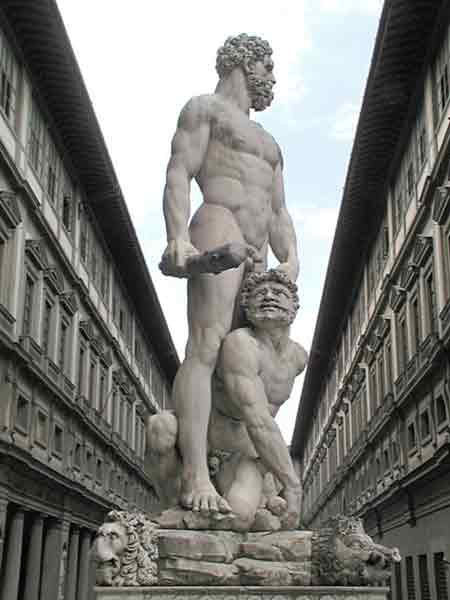
One of the high status locations of European civilization, the Uffizi
Gallery
in
Florence.
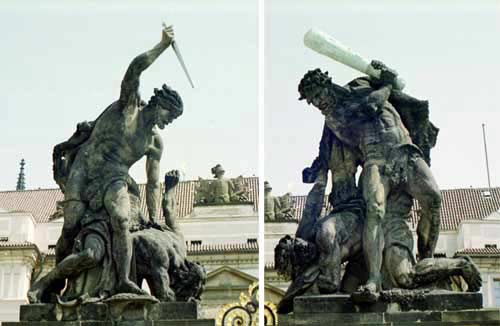
Figures on the entrance gates to the Royal Palace Prague.
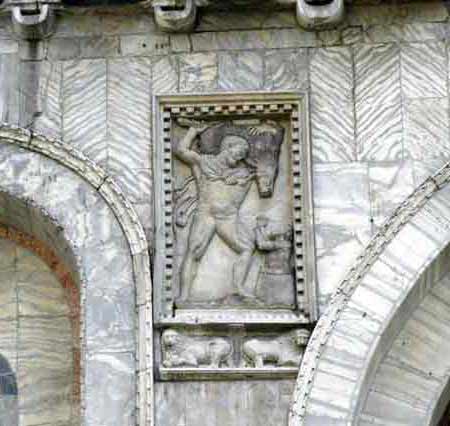
High up on an outside wall of San Marco in Venice, Hercules teaches
someone a lesson.

Hercules again.

In a shop window near where I live, this banner and the toys (below)
that it promotes, introduce young boys to the delights of
bullying and violence.

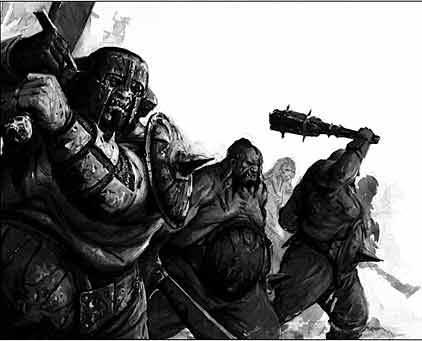
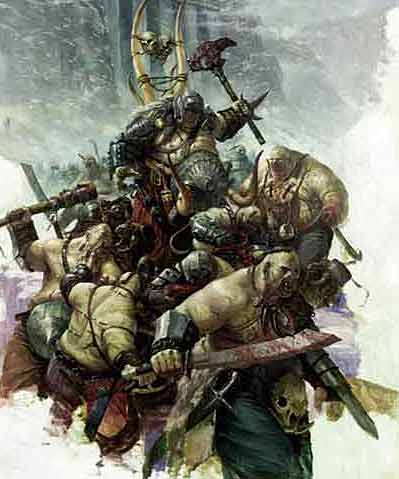


Smash! Crunch! Toy on sale in an Italian market.
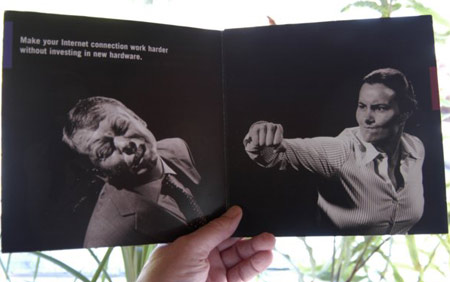
For some reason an Internet provider thought this direct mail offer
would be just what I needed.
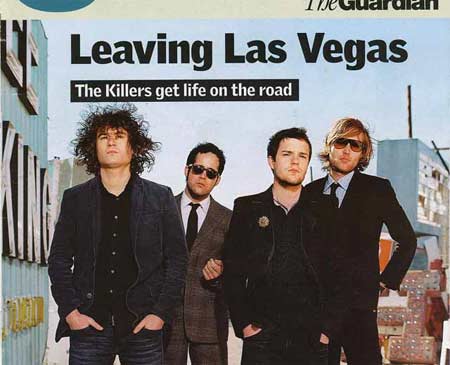
Music can be violent too, have fun with The Killers.

Or if The Killers aren't enough, try TeamKilling.
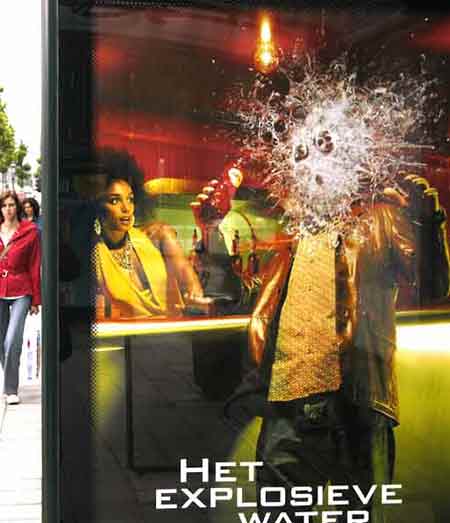
And in Brussels in the weeks and months when Iraq is still being torn
apart
you could enjoy violently explosive bottled water.

Old wars can be such fun as well! Video game advertised on the London
Underground.

A weeks long advertising campaign in Belgium for the local lottery
took the form of a naval battle (here and below).

Translation: In Sea battle! the only winner is you!
WIN EUR40,000 BY SINKING SHIPS
As of November 3, thanks to Sea Battle you will scratch, bombard and
explode everything! Aim: sink all the ships, reap in a maximum of
Euros.
So, throw yourself in the water and scratch a Sea Battle!

Of course people do get hurt in naval battles but it's still such fun
to win them isn't it?

Summer 2005 saw shedloads of people, royalty included, having fun
celebrating the deaths of over 4000 sailors in a reenactment of the
Battle of Trafalgar.
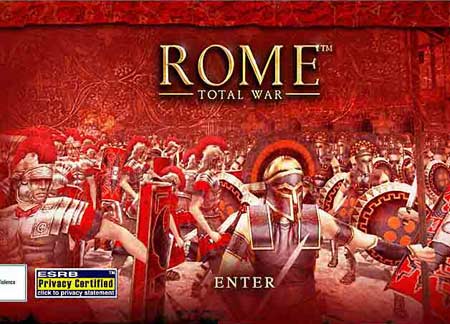
Why limit our fun to sea battles? Let's have Total War.

Enhance the fun of the computer games violence, run these games on a
weaponised
PC.

As the headline admits, cultures of domination legitimize violence and
hide the damage,
distress and traumatization that it
entails. Either, as in video games, by creating virtual worlds,
or
though splitting/dissociation, becoming entranced, so that the
consequences of our actions drop out of awareness.

The 'warrior', pinnacle of (prepsychological) manhood.

The 'warrior' again, have fun 'killing people and breaking
things', as a marine in Iraq described his work .

More warriors as heroic entertainment.

Still more warriors, note the touching body language.

More warriors, they also have God on their side.

In this picture from the Abu Ghraib series, note the man with his
underpants pulled down, for reasons of 'abuse' of course, not
'torture',
and the green gloves on the standing soldier, could they
be...? No, surely not... the green hulk gloves you saw earlier?
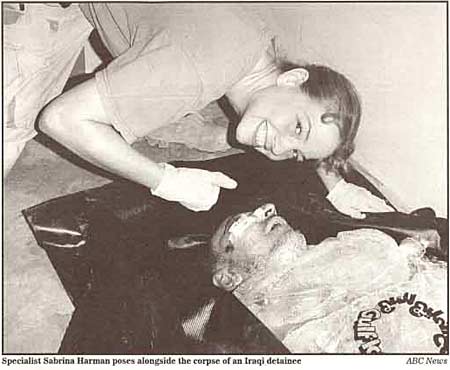
A female Abu Ghraib warrior entertaining herself with a corpse

Another warrior ready and willing to show that,
through video executions and suicide bombings, he too will stop at
nothing to demonstrate that he and his allies have the will and the
means to match US efforts to dominate the world.

Go to Iraq. Kill. Break things. Have fun with the locals.
"Lcpl Boudreaux killed my dad and he knocked up my sister"
Evidence
that photo is not a fake

Heroic Triumphalism as the US exits Falluja after the failed first
siege.

Oppositional Defiant Disorder Iraq-style

Delivering 'freedom' and 'democracy'.
This, I seem to recall, is an image of the US military visiting the
Falluja
hospital in the early days of the
second attack on that city.

Abu Ghraib: The US press and administration calls this 'abuse' to
hide the pain, suffering and subsequent traumatization that calling it
'torture' would bring into
the daylight.


God's army at work in Iraq.
'Thank you O God for surrounding
our personnel, their families,
and our allies with your favour and your faithfulness.
Deploy your Host from heaven so that your will for America will
be performed on earth as it is already perfected in Heaven'. From
Rev. Kirbyjon Caldwell's Benediction at the 2005
Presidential Inauguration

God's army works in the music industry too. Christianity under threat?
Or
christianity will blow you away?
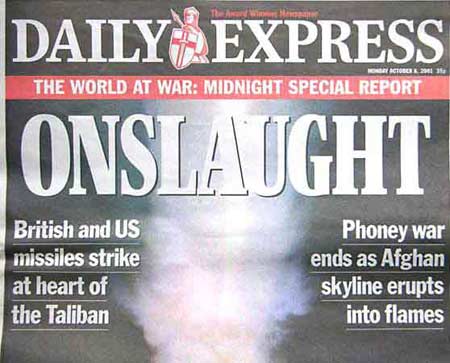
God's army at work in the press. The Sword and the Cross. Conquer the
heathen... Repel the infidel! This
UK newspaper has had a crusader on its masthead for as long as I can
remember.

Video game: have fun killing Islamists!

Cinema: spirituality crusader style

Jesus Saves! Join this crusade to discover the perfect fit between the
Jesus message and an attacking eagle!

Think again it says. Yes, some
animals
are natural born killers but why, during a
failing attack on Iraq by the overwhelming military resources of the
US, should we be so so interested in predation?

Curious.This violent predatory animal has a strongly middle eastern
flavour.

Find another violent predator... show that you can overcome its
resistance
and impose your will on it... demonstrate your dominance.

Buy a horse, take out a subscription for some hounds. Hunt and kill a
violent predator... show that you can impose your will on it...
demonstrate your dominance, reinforce the naturalness of it with
archaic dressing up.
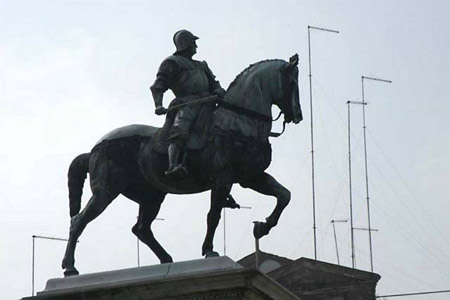
Another man riding high on a horse. One of the classic hypnotic
images that entrance us into the belief that dominance is natural and
inevitable. Few European cities are without several examples. This one
is in Venice.

In this 2004 presidential election photo opportunity, John Kerry proves
that he too subscribes to core American family values... he too enjoys
killing for fun.

More core American family values... This Texas shop stocks
camouflage hunting clothes for children
(picture courtesy of IB)

'Don't wait to introduce your favorite baby to the great outdoors! This
adorable little romper will be a hit with friends and family', from a
women hunters web catalog

Oh yes, and genocide can be fun too.

Appropriate an icon of leadership, the Native American Chieftain,
delete
the pain and suffering that the genocidal destruction of his culture
entailed and use it to promote your West London restaurant.

Appropriate 'Cherokee Nations' as an icon, delete
the pain and suffering that the genocidal destruction of their culture
entailed and use it to promote your SUV.
What next? The 'Auschwitz Special Edition' from Mercedes?

Complete and absolute control... especially over bodies.


With complete and absolute control even the damage and pain of surgery
can be entertaining fun.
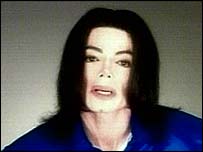
Buy yourself another face, Michael Jackson did.

Have fun mutilating yourself, this woman does

If we had total control... of what happens in the brain.... then maybe
we could be permanently happy. Until then domination and abuse of
animals will have to do.
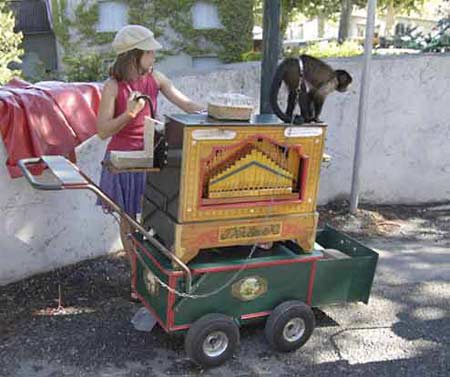
And the total control of grinding out the same tune day after day is
made attractive by having a fragment of 'nature' on a chain, or in a
flowerpot.
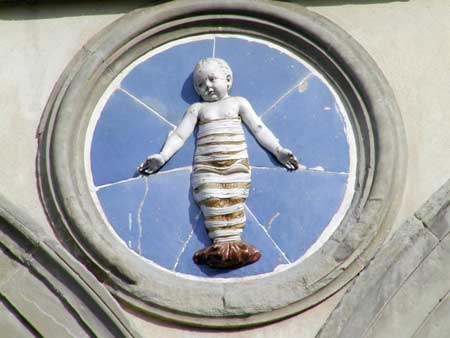
Total control used to mean swaddling babies so that they could be
hung up on a wall, or on the back of a door, out of the way of grown
ups.
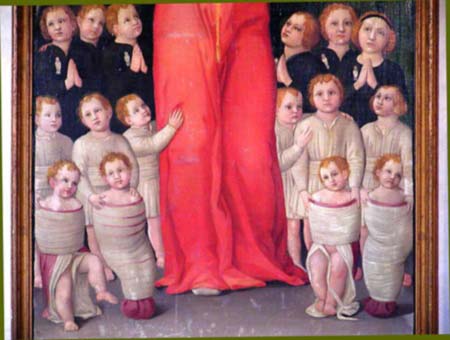
Total control used to mean that infanticide and abandonment were
commonplace. Until 1875, the hospital in Florence that owns this
picture had a public window through which you could post your unwanted
baby.
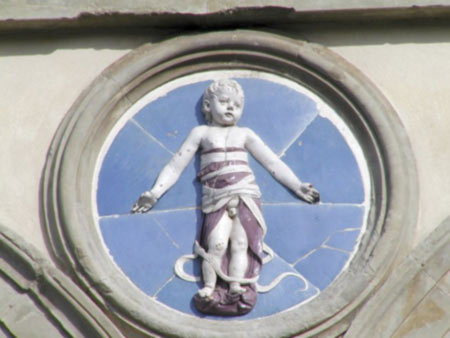
Total control used to mean
beating and tormenting
babies and young children to break their will, and to expel the
sinfulness of
their disobedience.
 Two children under the age of 15 die from abuse
in the UK each week.
Two children under the age of 15 die from abuse
in the UK each week.
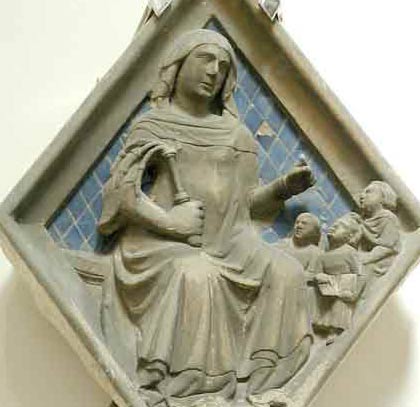
Loving care for children is historically quite recent. Extremes of
violence were commonplace in schools, workplaces and homes until the
middle of the 20th century, and
still are in some cultures.
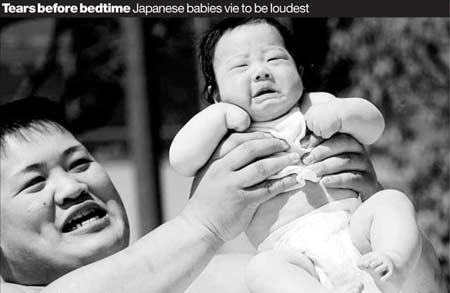
In Japan some people believe that distressed children grow up to be
big and strong. This baby is in a competition for the loudest crying
baby.
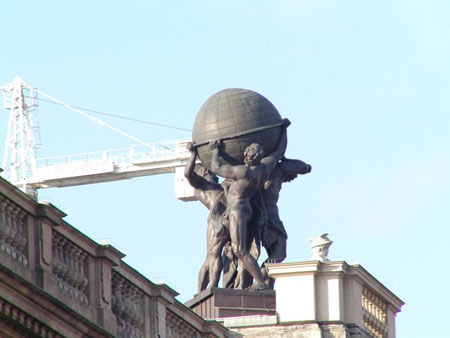
The illusion that humankind can own and thus control the whole world,
if only we could get a sufficient grip on it, isn't a new notion. As
witness this art atop of the Berlin Post Office c1875

Keeping an eye on the whole world.
'The mission of the Defense
Advanced Projects Research Agency [DARPA]
is to
maintain the technological superiority of the U.S. military and prevent
technological surprise from harming our national security by sponsoring
revolutionary, high-payoff research that bridges the gap between
fundamental discoveries and their military use'.
Translation: be
sure that for the US military 'full
spectrum dominance' means what it
says.
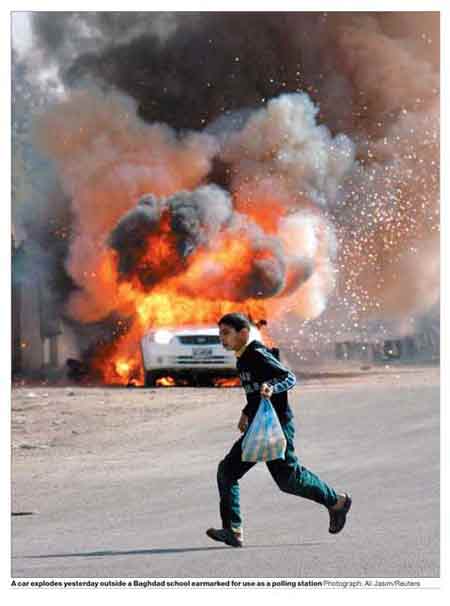
Unfortunately, what has been described as the the ultimate smart
weapon,
suicide bombing, seems to have got under the radar of the DARPA agency

Cultures of domination mass-manufacture victimhood

Ad in US magazine c1970

Street poster in Brussels

Ad in Belgian supermarket magazine
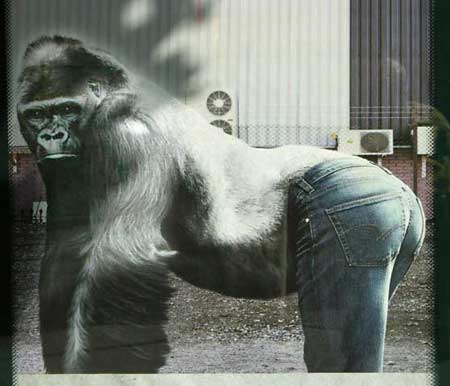
Jeans ad in Brussels

Ad in Brussels Midi metro station

Ad in Venice shop window
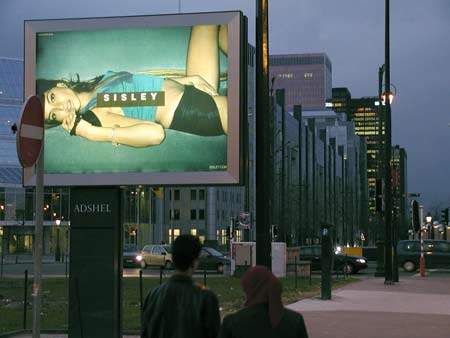
Ad outside government offices in Brussels.
Many women don't need to be reminded of the cultures of domination that
seek, literally and metaphorically, to shape them and their
preferences,.
Many more seem only too willing to buy into the notion of becoming some
form of sexual
commodity.

And, if even Emotion can become a commodity, what is ruled out?
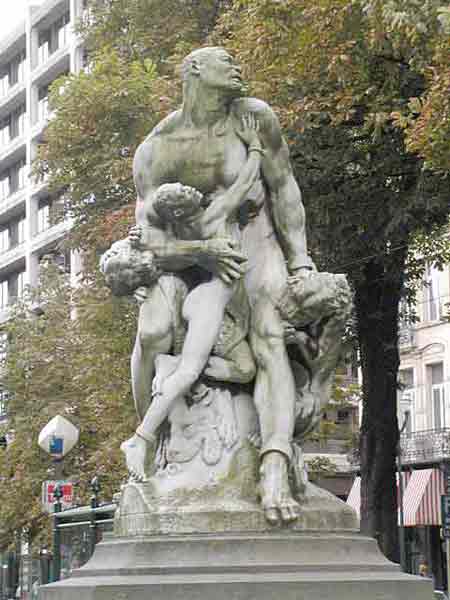
I've never been able to make sense of this statue at a tram stop in
Brussels' Avenue Louise. A terrified, manacled negroid boy and a
manacled non-negroid man being eaten by two lions. Victims of
Belgian care for the Congo?

I've never been able to make much sense of this Brussels car ad either.
Doesn't
look much like love to me.

This French ad is from a time when petrol companies still thought ever
expanding markets were good business.

Another example of how cultures of domination legitimize violence.
Making a disconnect, as in this UK high street product, between images
of
harm and the felt experience of having your fingers amputated.

Here is another example of disconnect. Hands torn from an unknown
person coupled to a smile of pleasure.

Yet another disconnect. The necklace being admired in this Belgian ad
is
described as a 'Créateur d'émotion'. What kind of emotion
do you think the dog trapped outside the lift is going to
feel?

It takes a disconnect to enable, or bystand, this Israeli
destruction in the
Gaza refugee camp of Rafah. The same disconnect sustains ignorance of
the
probability that
the traumatization of such children will still be shaping their values
and motivations for generations.

Honour the birthday of Jesus, get a gun for Xmas

'High octane', 'explosions', 'blow away the competition'. Damage-free
warfare talk.

Free post card from a local café

Free post card from a local café

Free post card from a local café

Disconnect the damage and pain from violence and what are you left
with? Mr and Mrs Average?
'It starts with them saying to
a therapist that they have
an "average" marriage. Then it shows their jobs, both of them,
neither of them knowing about the other, involve endless hired
killings, for no particular reason indicated in the movie. Half
way through their endless killings they (for no particular reason
indicated in the movie) go after each other to kill their
spouses. Then, near the end of the movie (we finally walked out
in disbelief), a couple of gangs try to kill both of
them, with endless explosions. Now you know how an "average
marriage" feels these days.'
Elist message
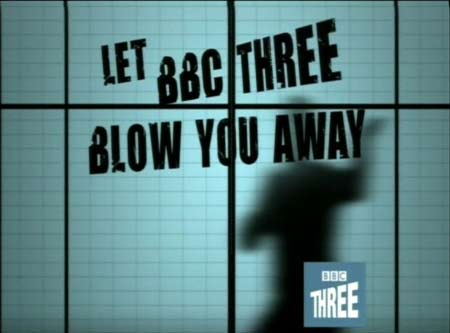
This is the last frame of a TV promotion run in the summer 2005 by the
BBC's Channel 3 that consisted of scenes of people killing or
being killed.

'Powerful stylish', 'a shot in the arm', 'gripping'. 'You get
only one shot at life'. More damage-free warfare-talk.

More 'spectacular', 'stylish', and 'provocative' guns at the heart of
musical entertainment

As I guess most of the world knows, the 'terrorist' the headlines refer
to was a Brasilian electrician unconnected with the recent bombings in
the UK, who was killed by eight bullets from armed police while held
face down on the floor of a London underground train.

Notice in London's Notting Hill Gate underground station.
Service information
Date 26 July 2005
Time All day
NOTICE TO ALL PASSENGERS
Please do not run on the
platforms or concourses.
Especially if you are carrying
a rucksack, wearing a big
coat or look a bit foreign.
This notice is for your own safety.
Thank you.
There are 0 writeback comments for this entry
posted at: 07:08 | permanent link to this entry


































































































































